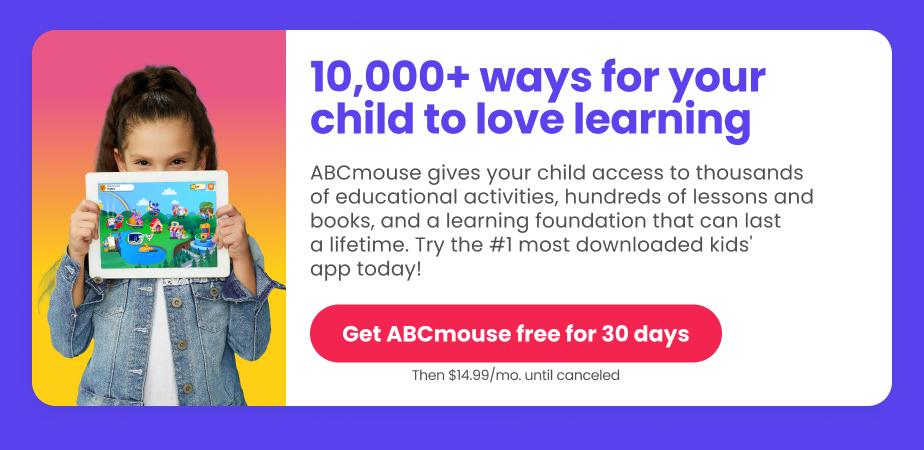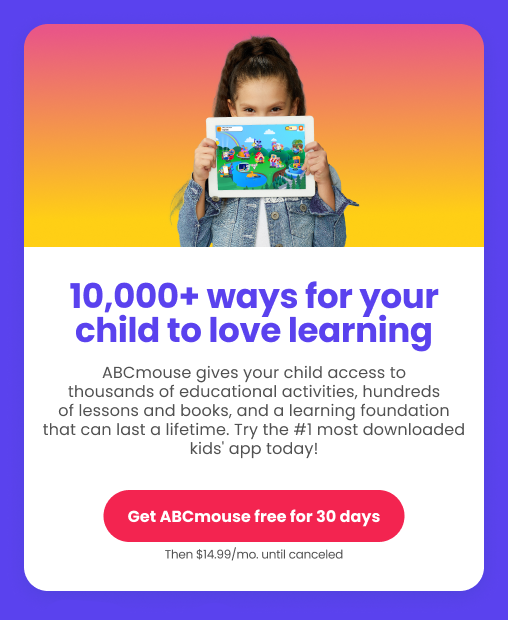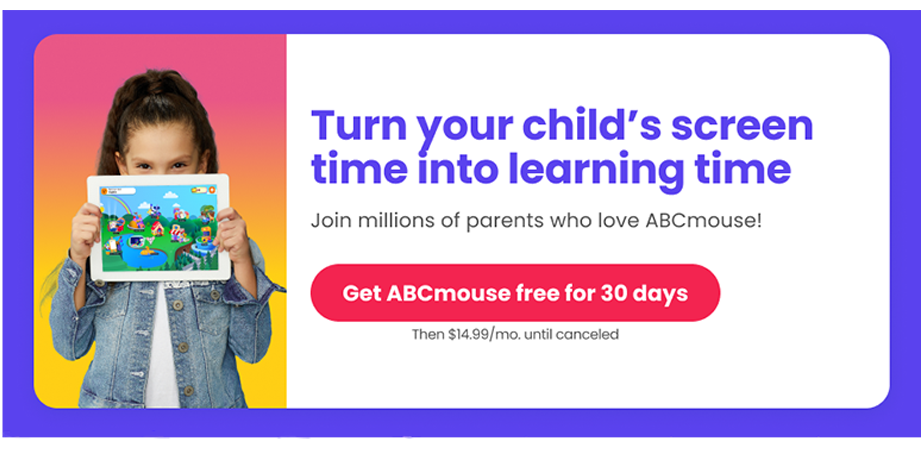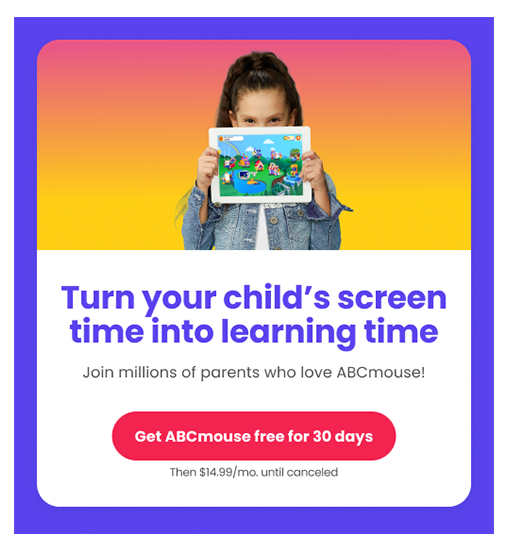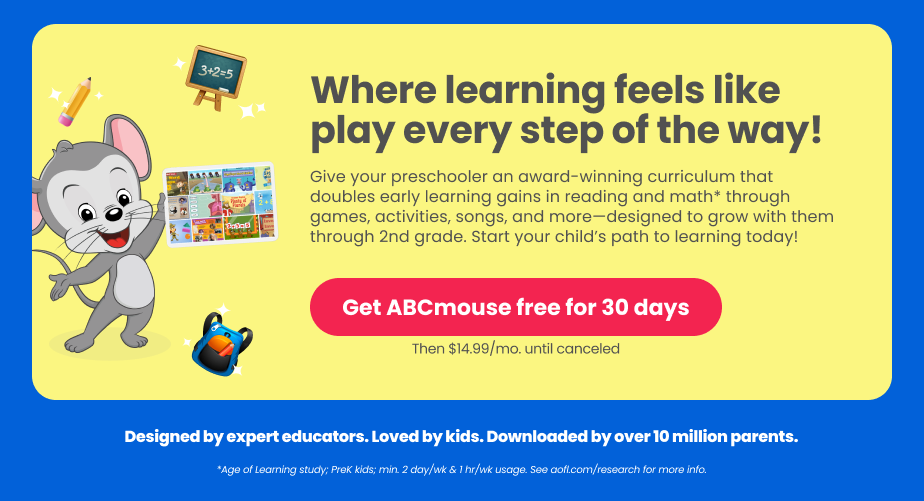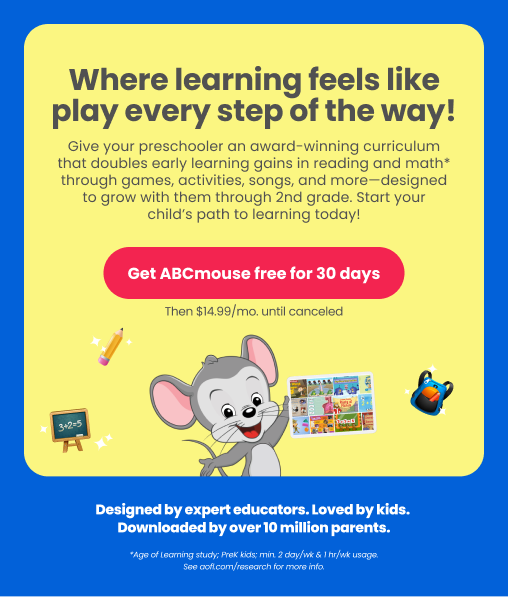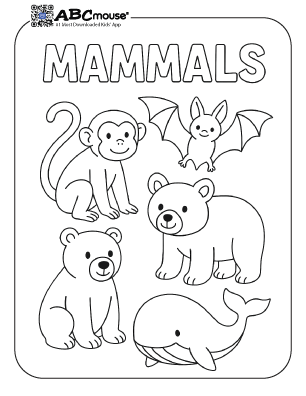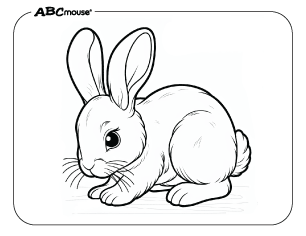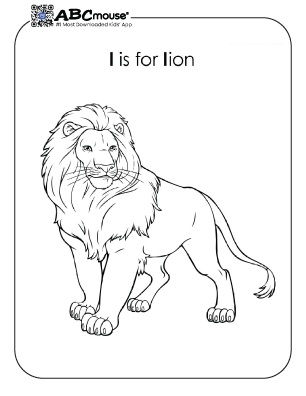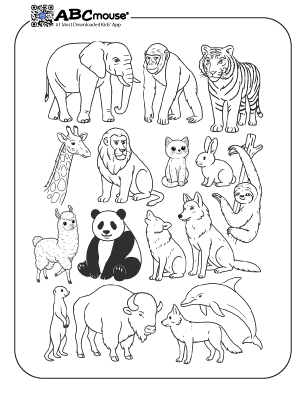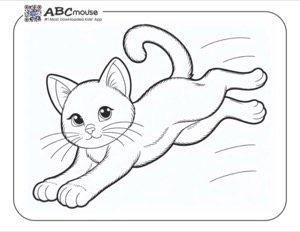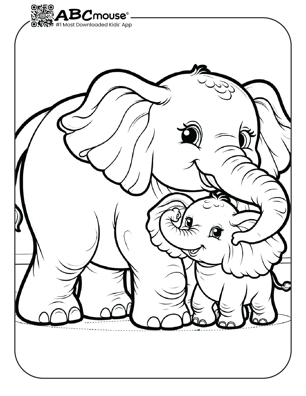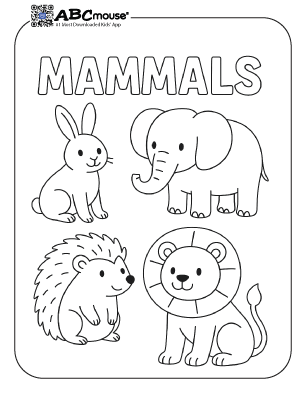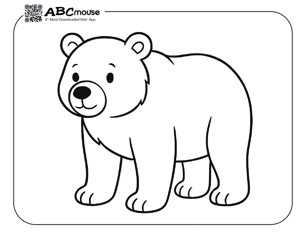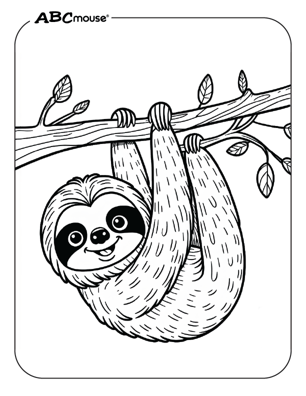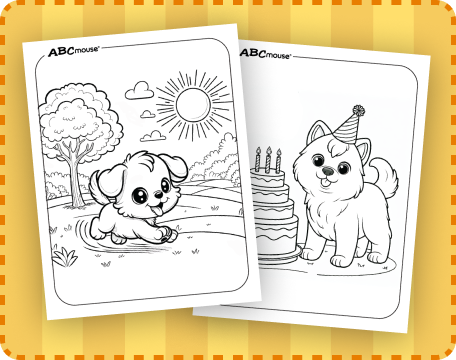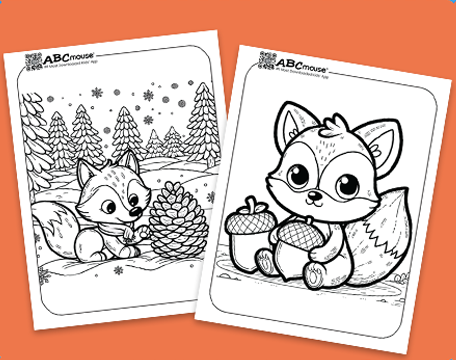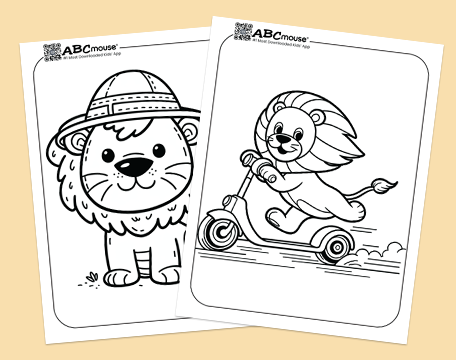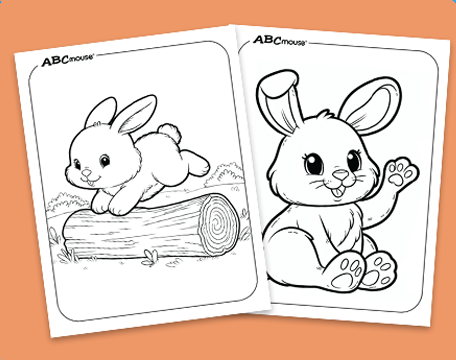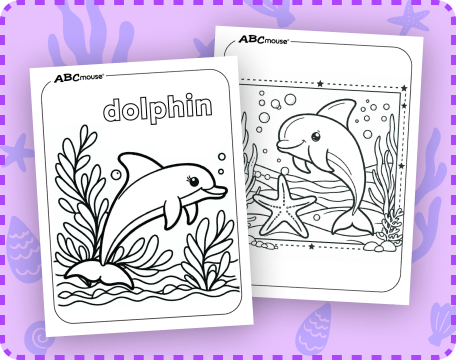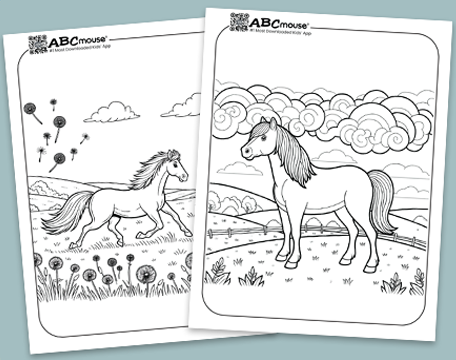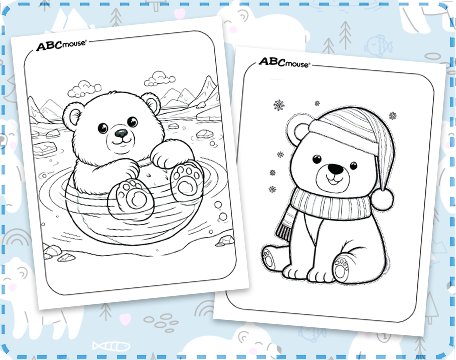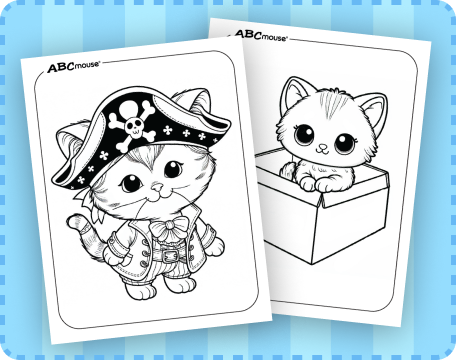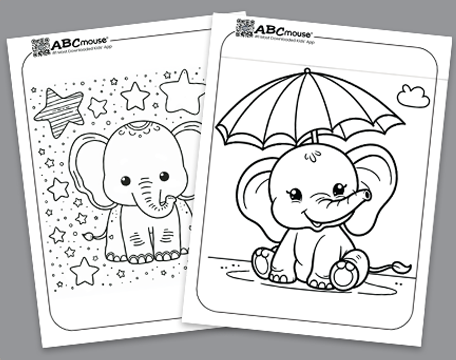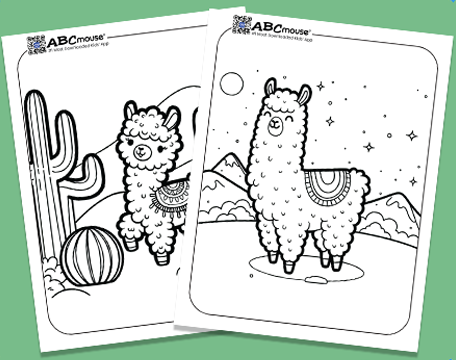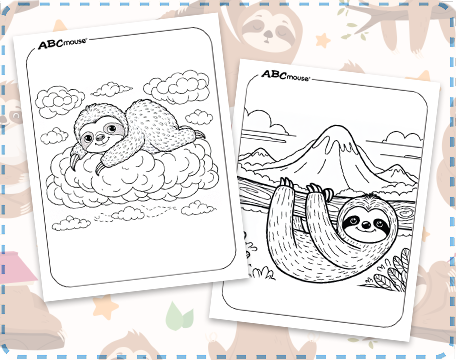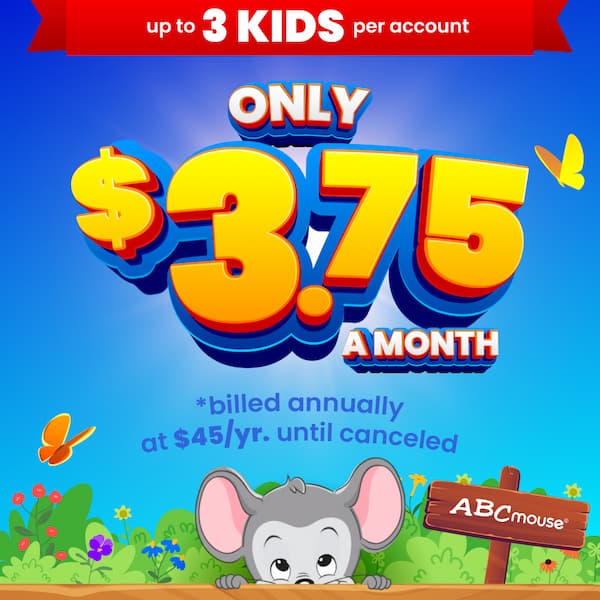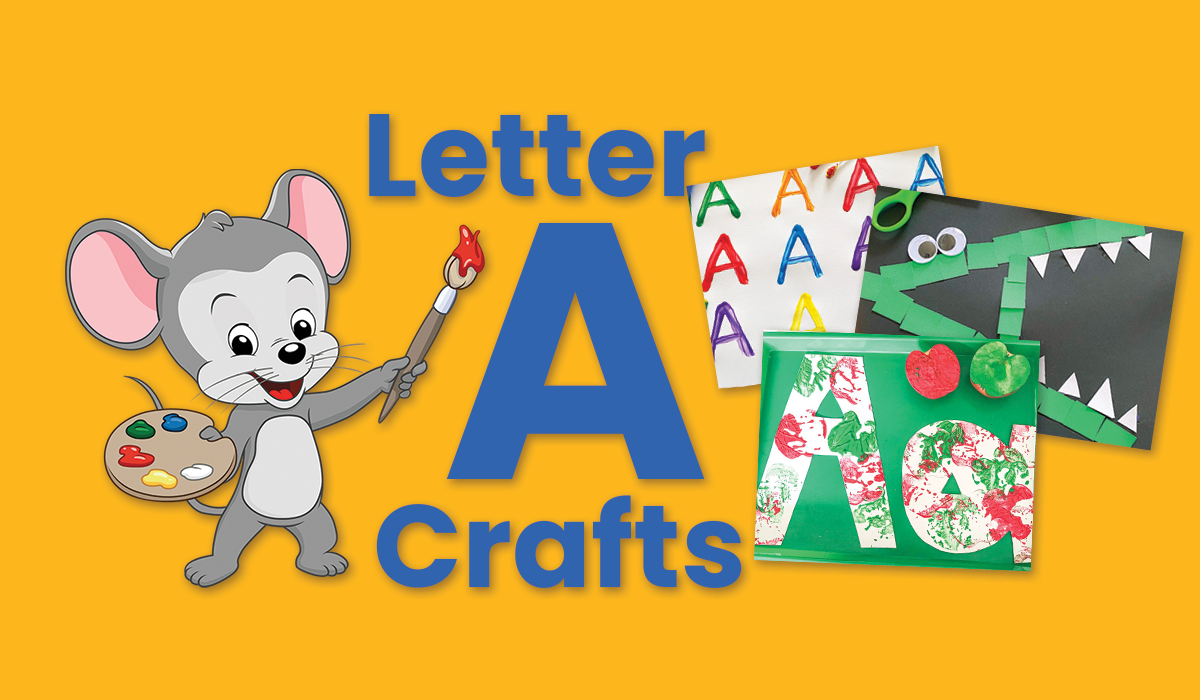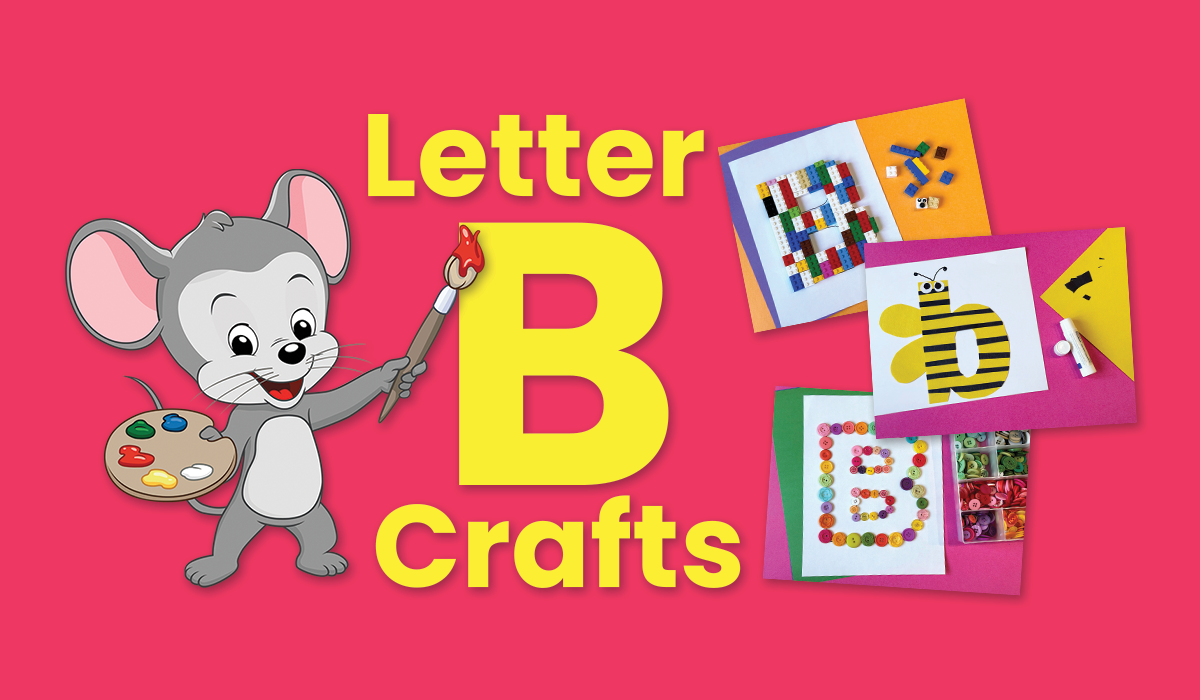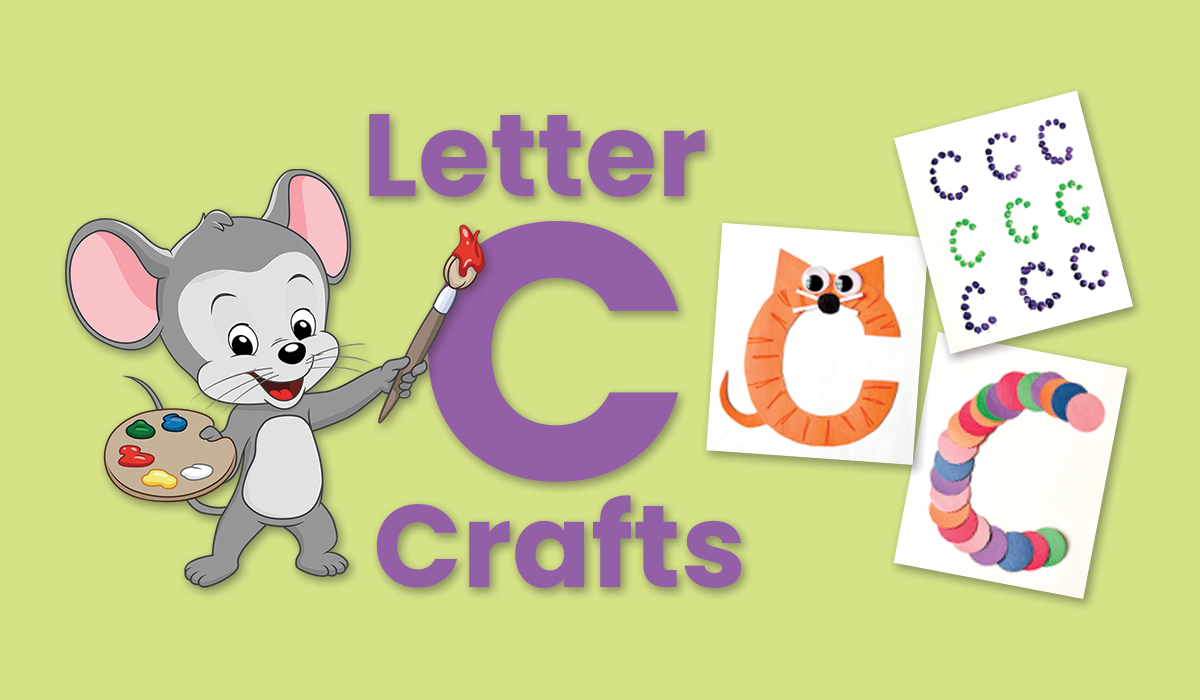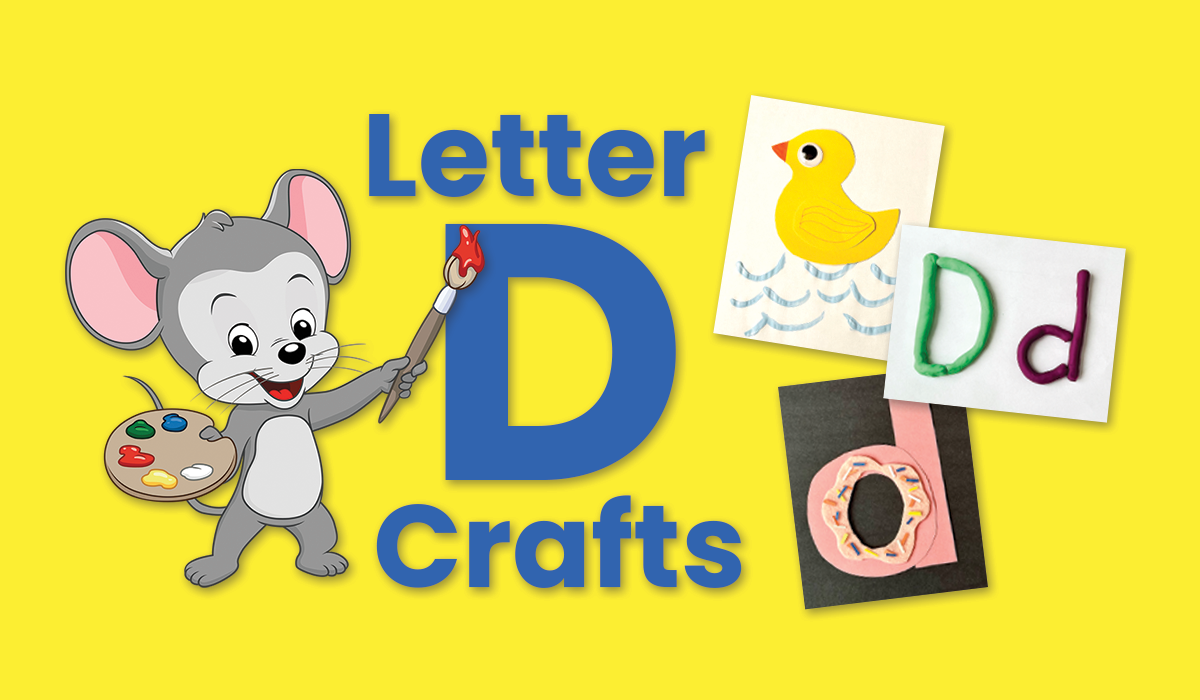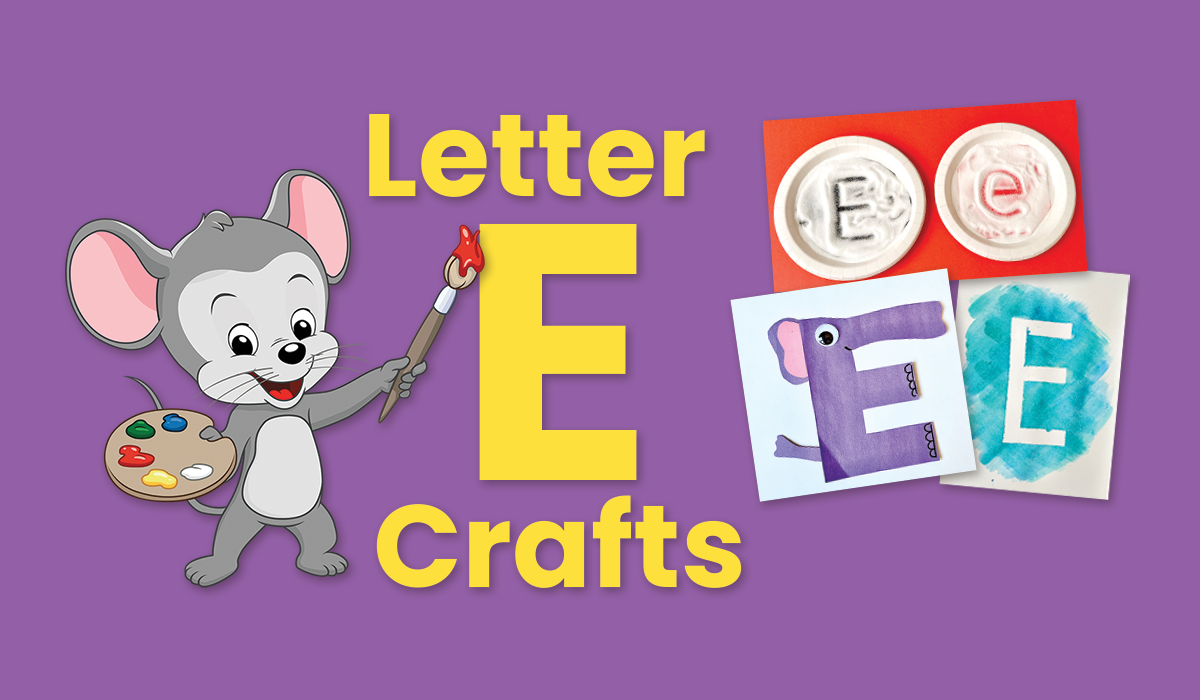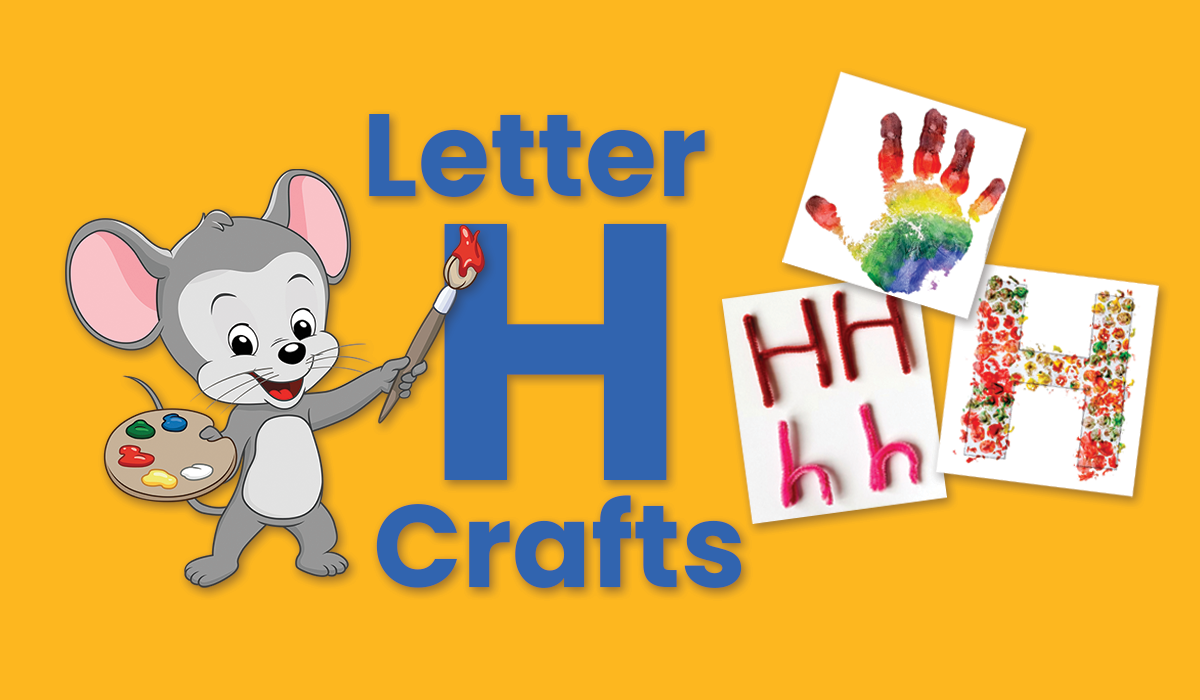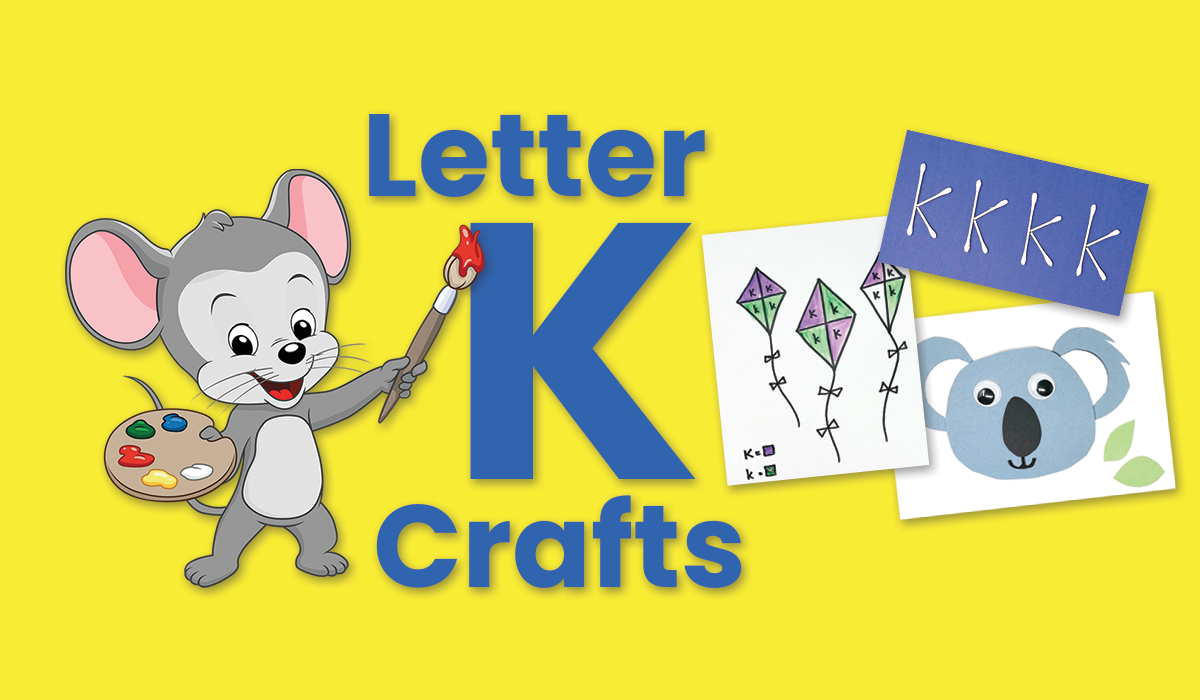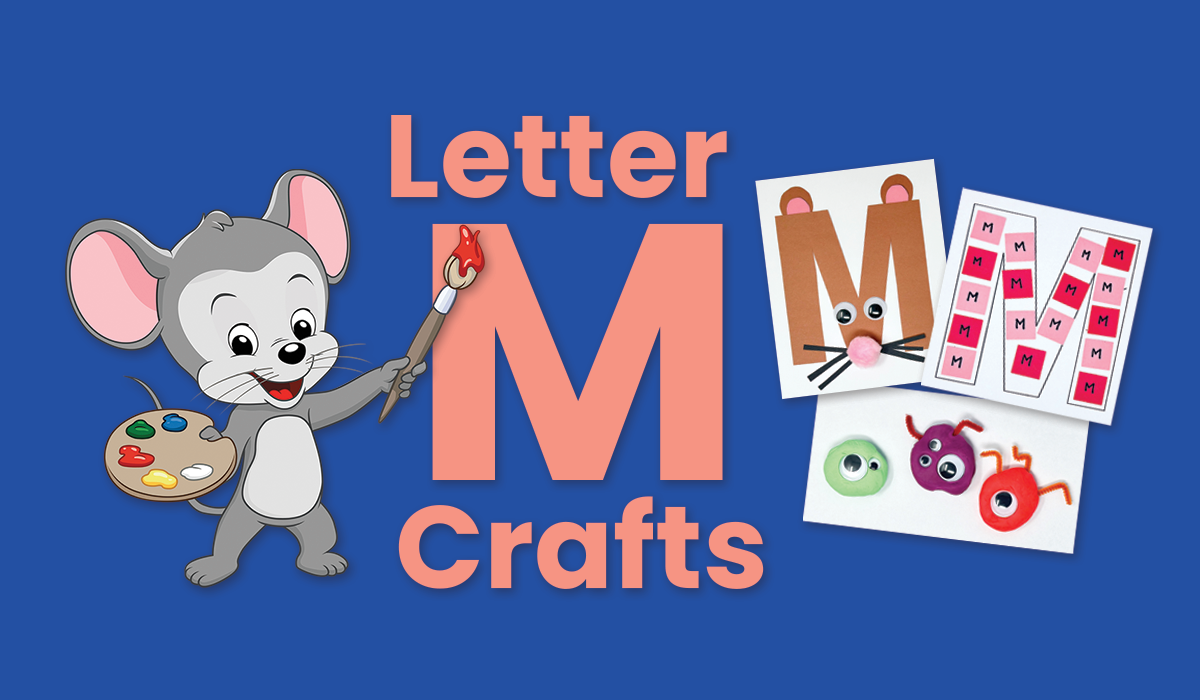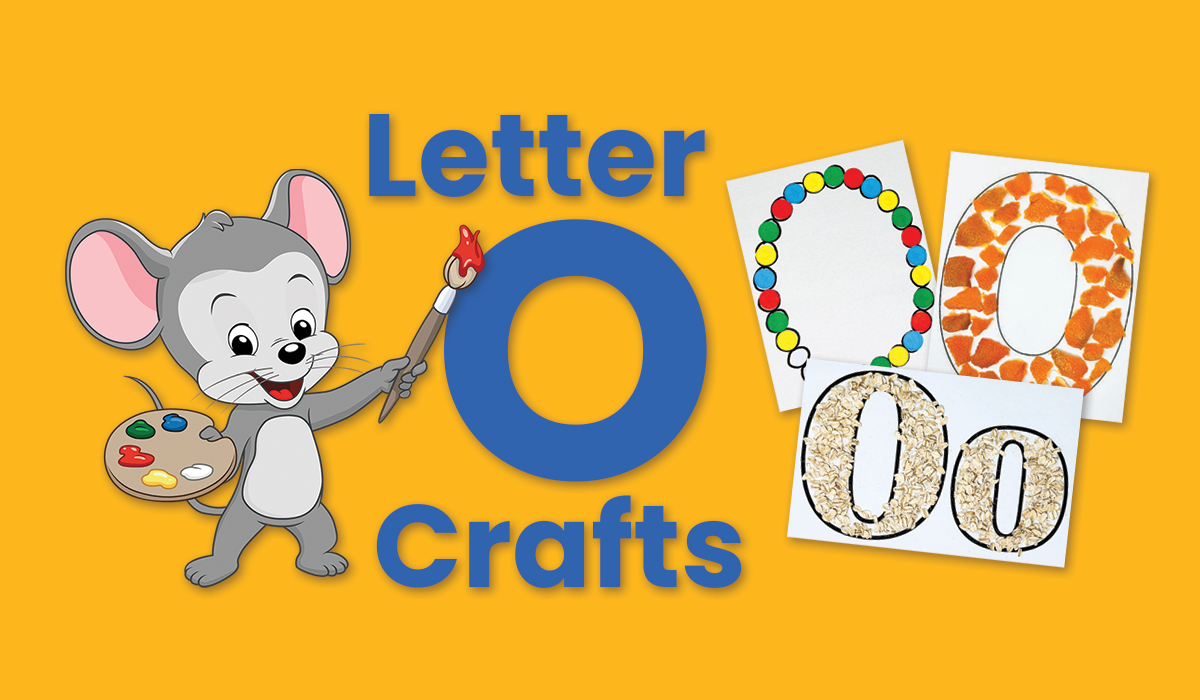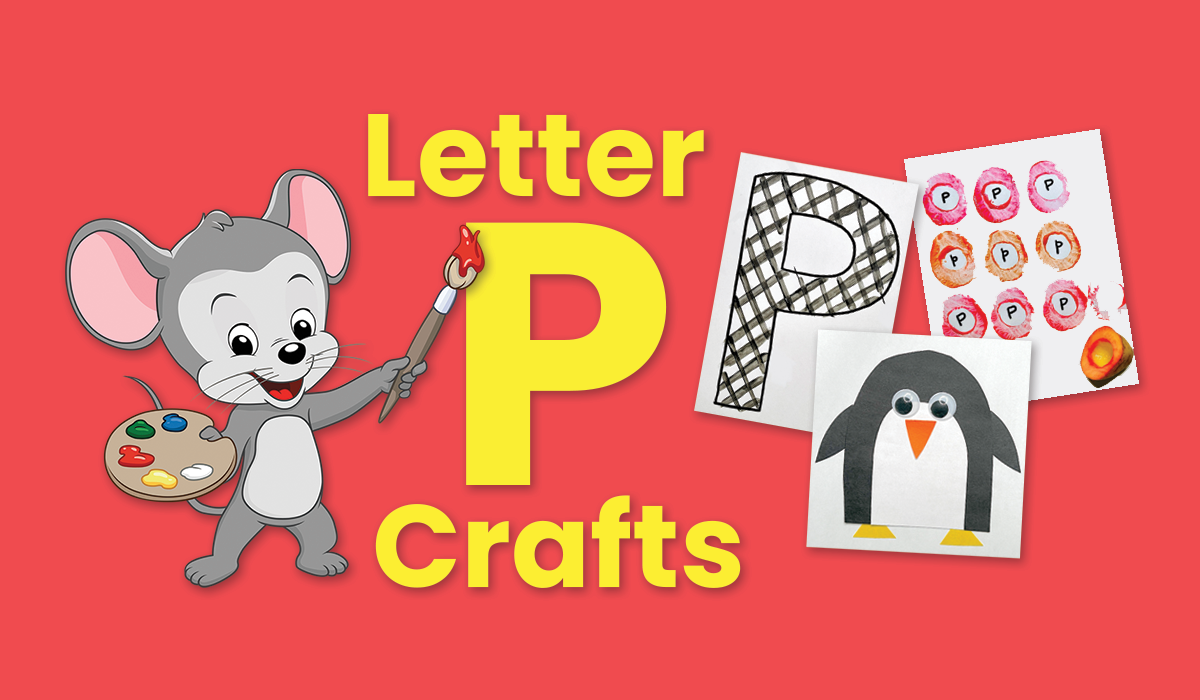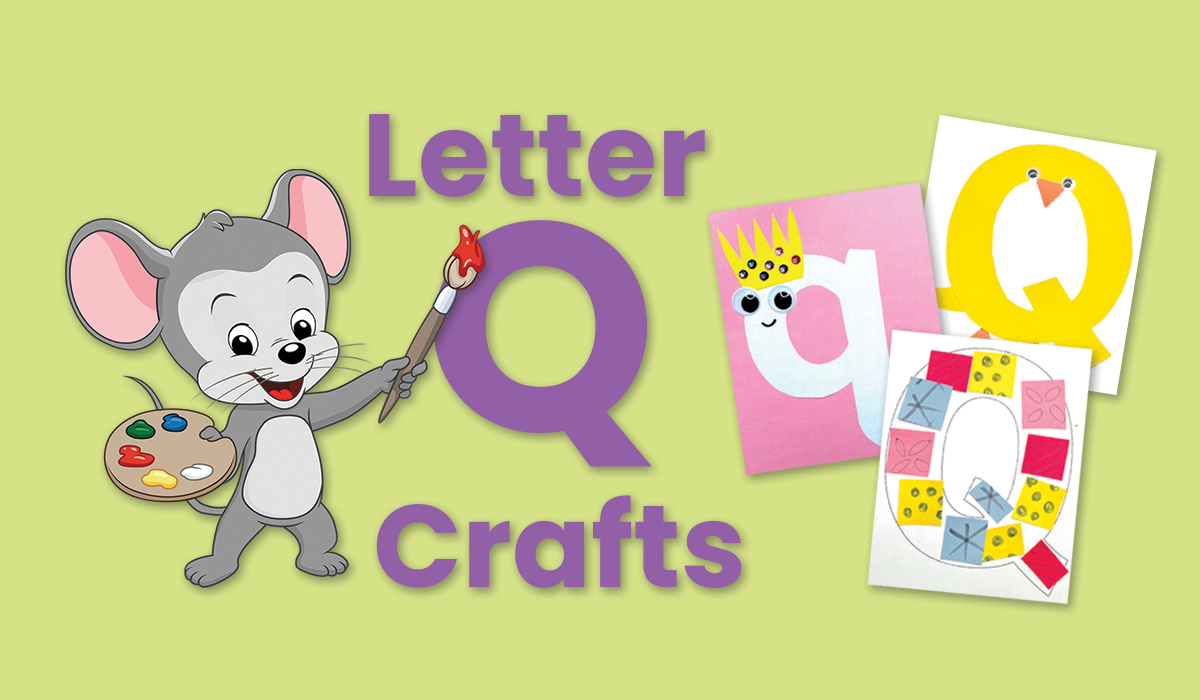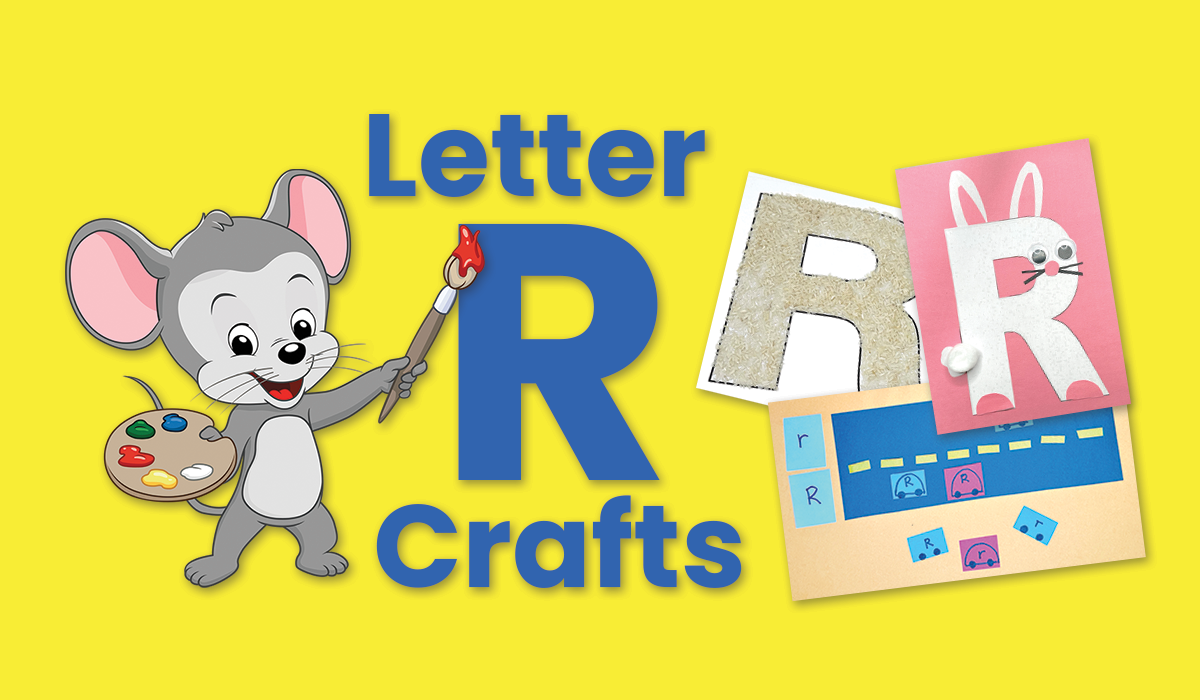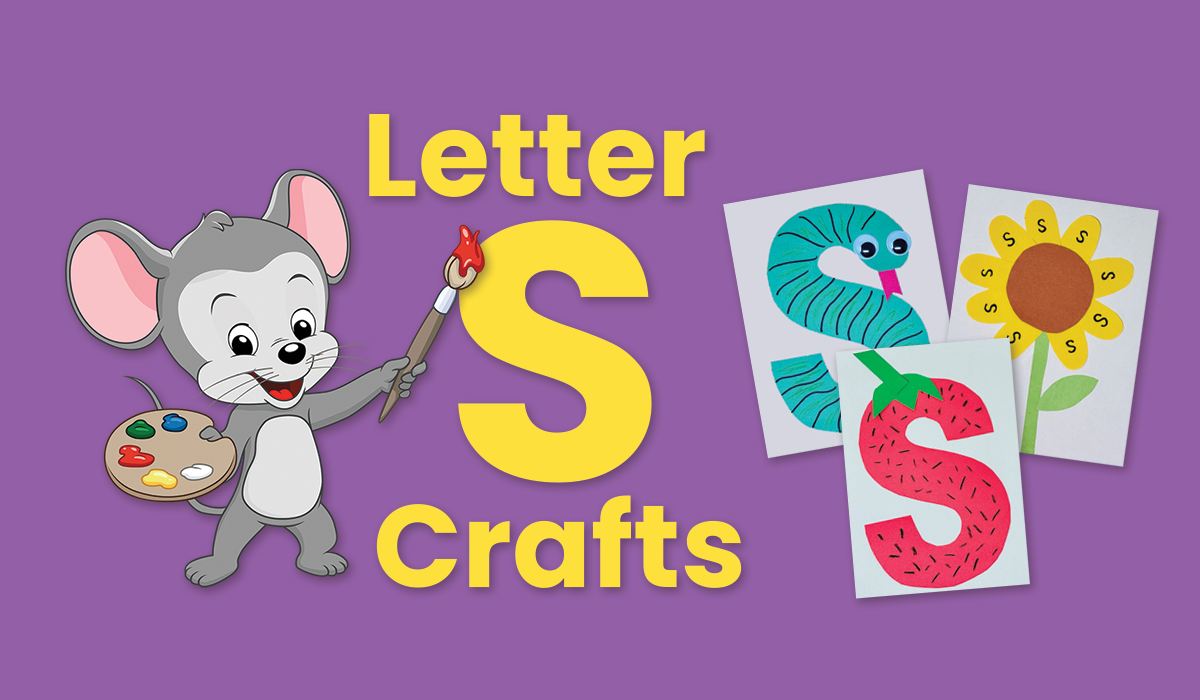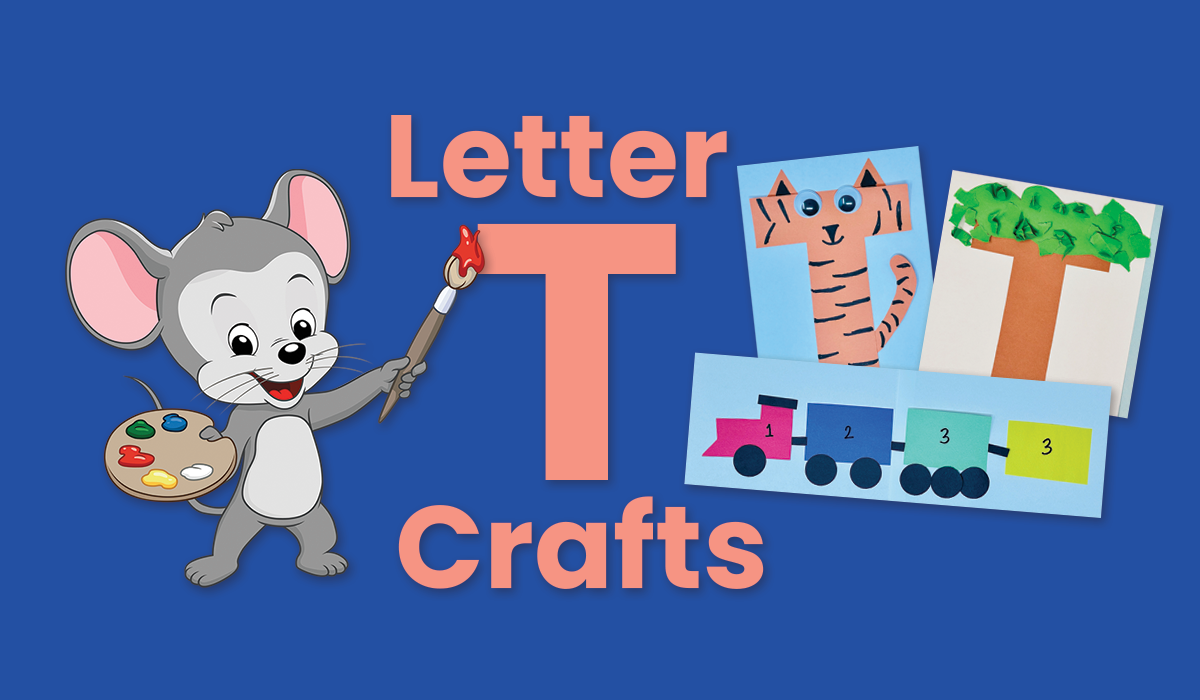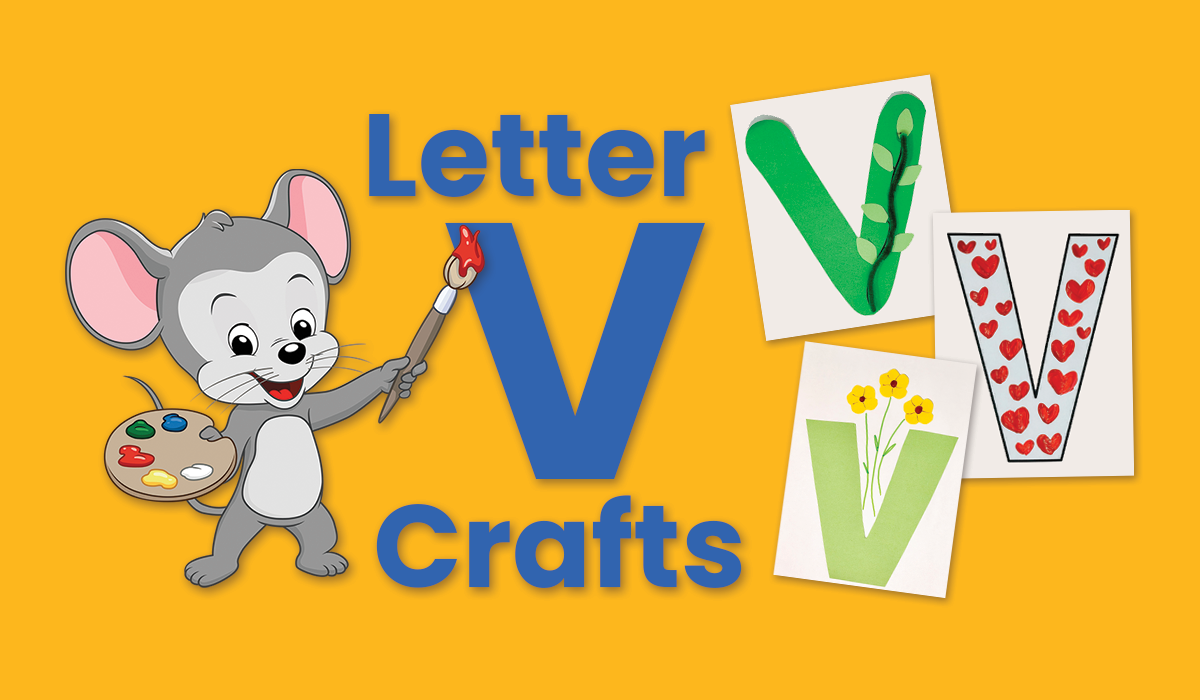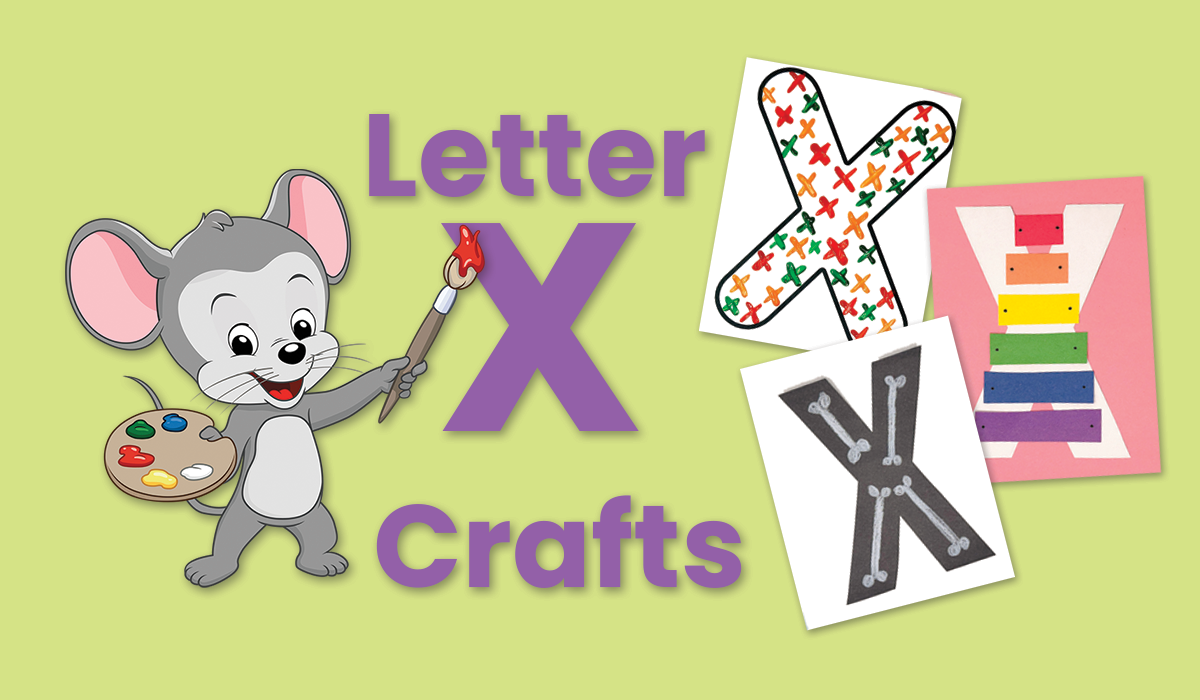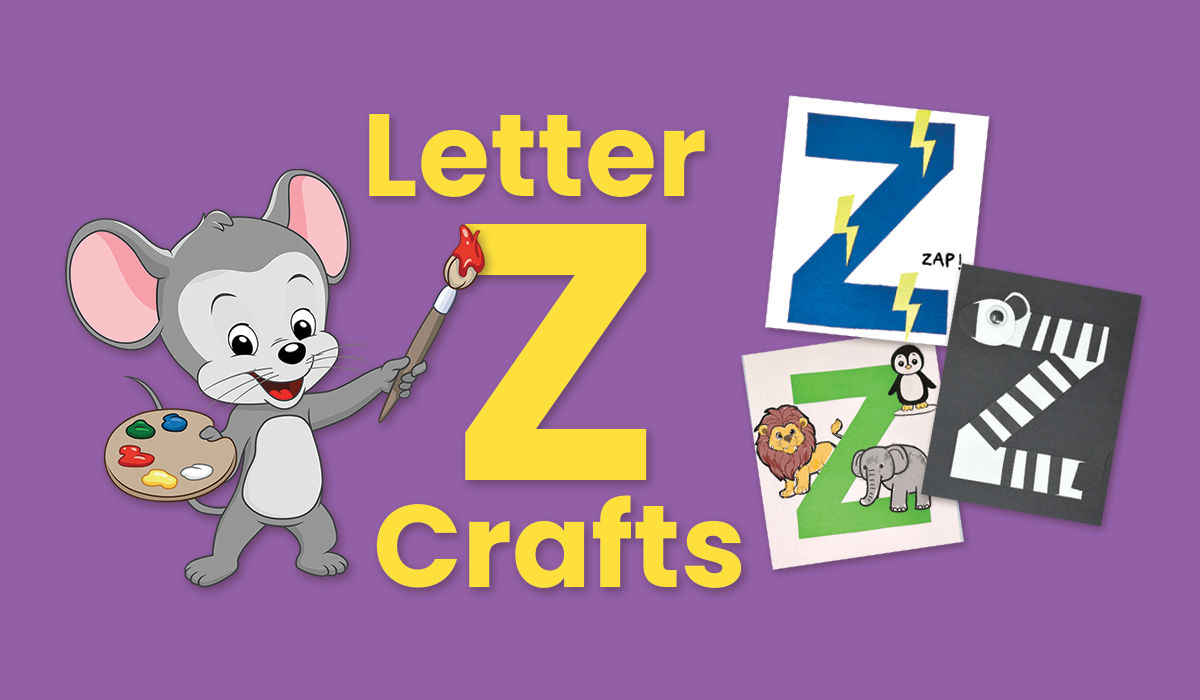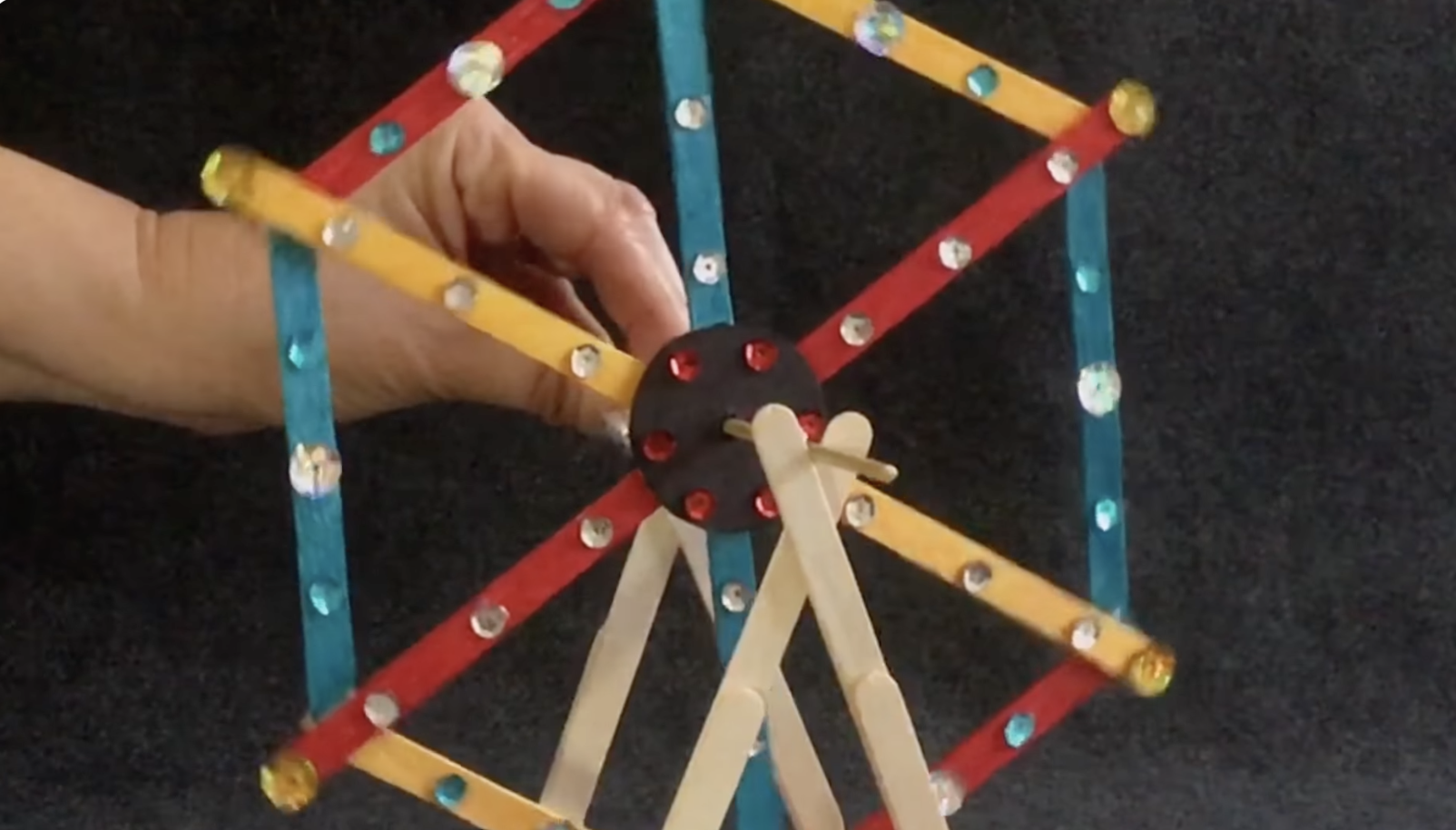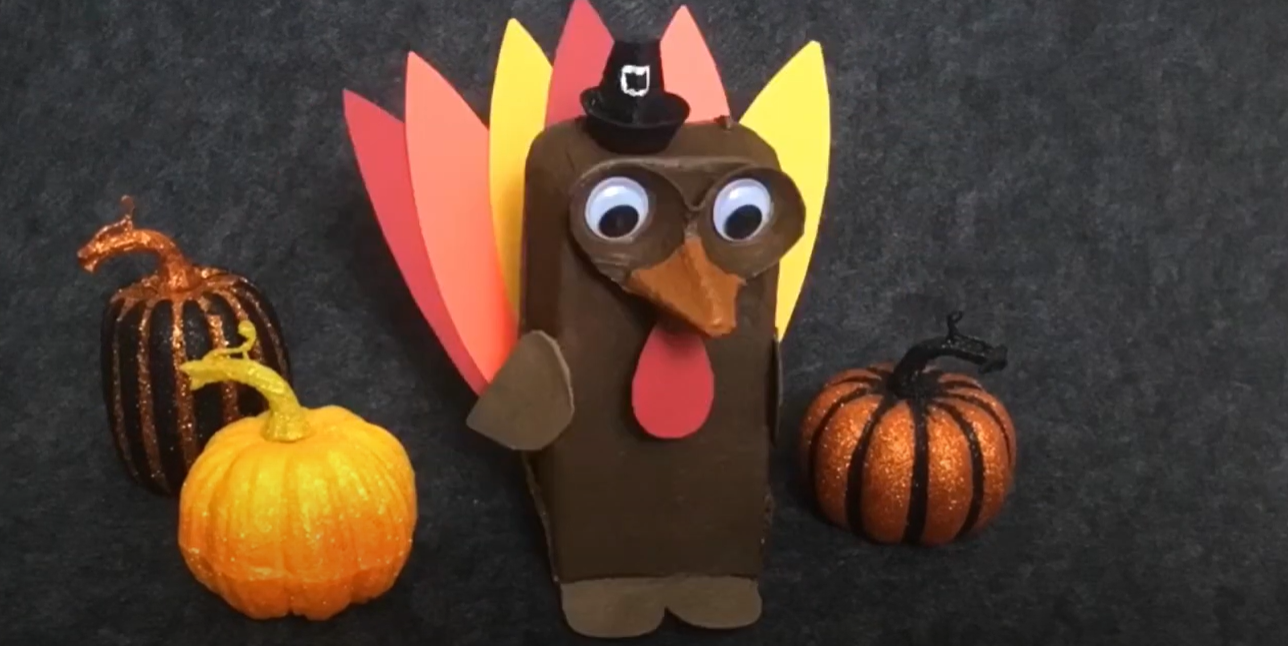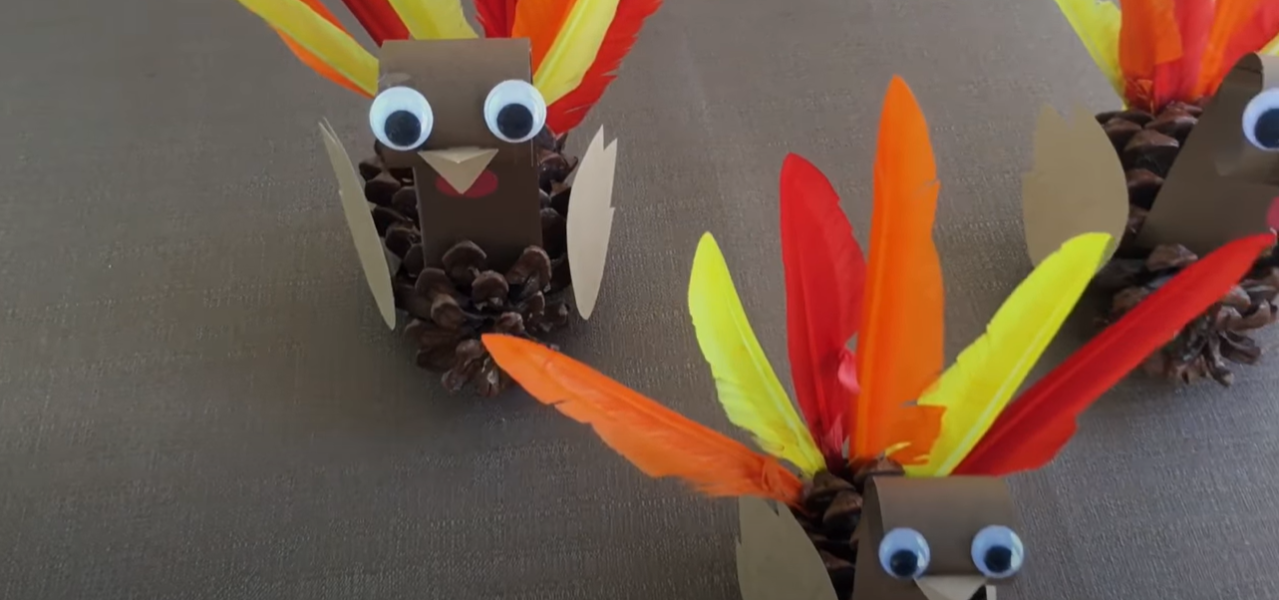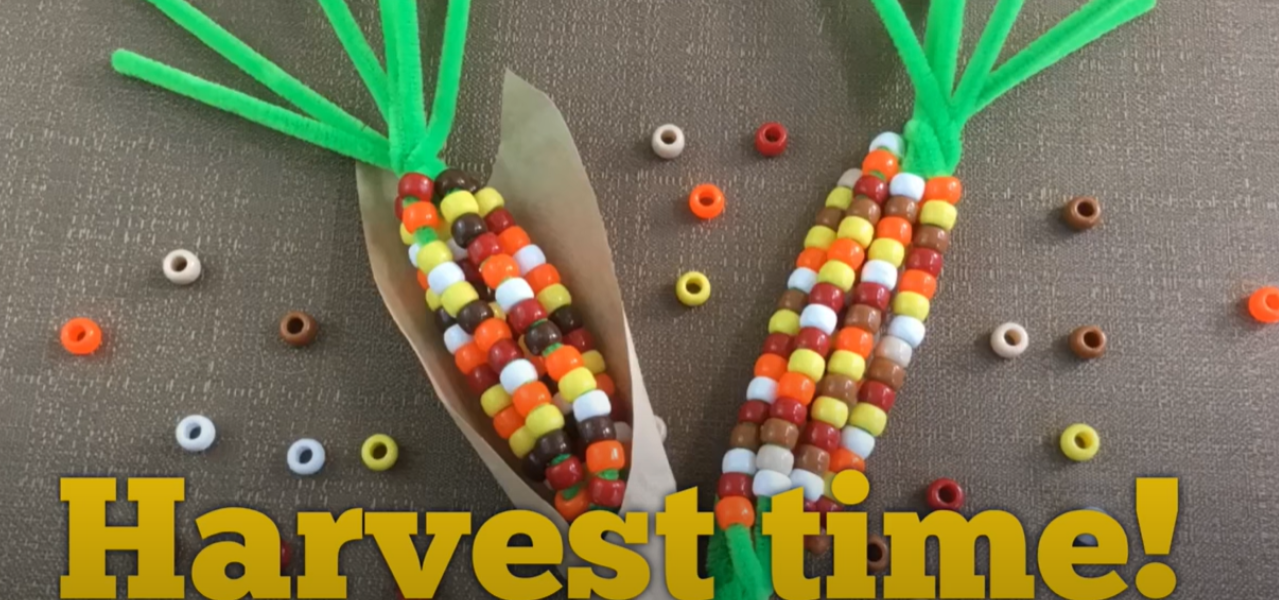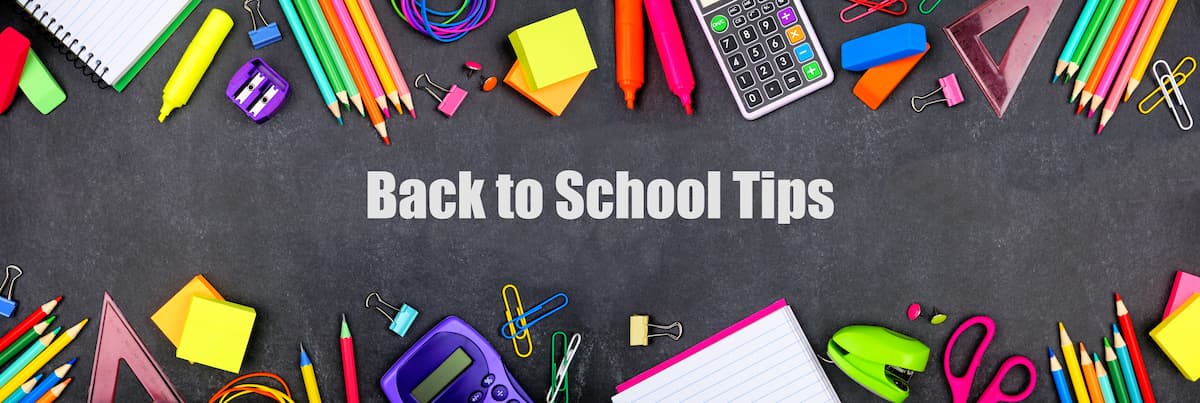
Back to School Tips for Parents and Families to Start the Year Off Right
Share
Take a deep breath, and get ready to start a fantastic new school year!
Table of Contents
When back-to-school time rolls around, parents feel the pressure increase. This is especially true if your child is starting school for the first time, and you’re not sure what to expect. (Chances are, things have changed quite a bit since you were in school.)
No worries! We’ve put together a big list of the best back to school tips for parents and families, so you’ll be ready to go when that first bell rings. For the ultimate back-to-school game plan, pair these tips with our free printable back-to-school checklists.
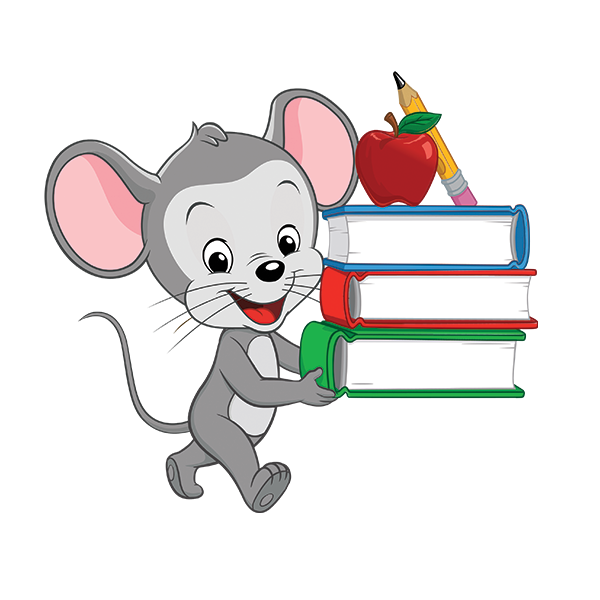
!
Tip:
Help your child get back in the educational swing of things by playing ABCmouse free online learning games, designed by experts for kids in preschool through second grade!
While they brush up on their academic skills, you can peruse this list and start prepping for the first day of school.

Back-to-School Tips: Routines and Schedules
Establish consistent school routines, and begin practicing them around two weeks before the first day of school. This gets kids into the habit and helps families work out any kinks before school gets underway.
- Create a daily schedule, and review it with everyone. Visual schedules can help children (and parents) understand what to expect each day and prevent last-minute confusion.
- Post and maintain a dry-erase board calendar to coordinate everyone’s long-term schedules too.
- Establish a morning routine, encouraging kids to do things in the same order each day. This could include wake up, make bed, take a shower, eat breakfast, brush teeth, etc.
- Start a school night routine as well: Lay out clothes, pack lunches, fill backpacks, and place them by the front door, and so on.
- Establish a routine for kids to follow when arriving home from school: Hang up coat, take off shoes, put backpack in homework corner, change school clothes, have a snack, 30 minutes of screen time, homework, help with dinner, etc.
- Rehearse transportation routines:
- If your child will walk or bike to school, do several practice runs together to see how long it takes and plan for inclement weather.
- If you’re driving them, work out the timing and route (remember to allow time for the drop-off/pick-up line). Review with your child who is allowed to pick them up after school, and go over any backup plans.
- Review bus schedules and visit your child’s bus stop. Discuss general bus safety rules.
- Practice lunchtime routines. School lunches are often shorter and filled with distractions. Some kids even forget or run out of time to eat! Set a timer for 20 minutes and practice unpacking and eating lunch, then repacking the lunchbox. Remind kids that lunchtime can be fun and relaxing, but nutrition comes first.
- To help routines stick, create checklists and slip them into plastic sheet protectors. Kids can check off the items with dry-erase markers as they complete them, then erase and start over the next day.


Back-to-School Tips: Healthy Personal Habits
Over the summer, sleep schedules tend to shift, mealtimes aren’t always regular, and kids spend more time playing on their own instead of following routines. It takes a bit to readjust once school starts up again.
Use these tips to start preparing kids in advance so they can maintain healthy habits during the year.

- Adjust sleep schedules gradually: Shift bedtimes earlier a week or two before school to ease into the new schedule. You can do this by as little as five minutes a day to make things easier.
- Plan meals together, including breakfast, lunch, and dinner. Strive to create menus that are nutritious and balanced, but also include things everyone will enjoy.
- Don’t skip breakfast! Plan quick and healthy meals at home, or participate in your school’s breakfast program if available.
- Teach your child to pack their own lunch. Very young kids can work with their parents, choosing foods and placing them in their lunchbox. By mid-elementary, kids can do a lot of this work themselves, including adding items to the grocery list when they’re running low.
- Create a healthy snacks bin. Growing and learning makes kids hungry! Choose easy, healthy snacks together that they can enjoy, and set rules about them (no snacks one hour before dinner, no sugary snacks before bed, etc.).
- Cut back on screen time. Your child probably had more free time for screens over the summer, but now’s the time to start cutting back to prepare for school-year limits. Tip: Reducing exposure to screens before bed can promote better sleep!
- Stay hydrated. Most schools permit kids to carry personal water bottles. Show your child how to clean and fill theirs, and remind them to drink regularly throughout the day.
- Encourage independence and problem-solving. Involve your child in choosing their school supplies, creating routines, and handling tasks like dressing themselves and taking care of hygiene. They’ll be expected to do things on their own in the classroom, so help them prepare now by entrusting them to complete age-appropriate tasks and chores to get ready for back to school.
- Promote a growth mindset. Remind them that school will be full of challenges and things they don’t know how to do … yet. Assure them it’s okay (and expected!) to make mistakes—that’s how we learn. Recognize their resilience when they persevere, and celebrate their efforts along with their accomplishments.
- Don’t be surprised when kids have more meltdowns than usual. Adjusting to new routines is exhausting and overwhelming at any age, and very young kids are still learning how to process their feelings. Hear them out, then see if they need more sleep, healthier foods, or some other type of support.
- Talk to kids about emotions and mental health from an early age. Be sure they know who to ask for help when they need it and that their family will always listen and support without judgment.
- Show your child how to set goals, like drinking a certain amount of water, reading a set number of pages, or spending a specific amount of time outside each day. Use habit trackers or star charts to help them stay on target.

Back-to-School Tips for Academic Success
Learning is what it’s all about! Here’s how you can provide your child support and guidance to help them succeed academically in the year ahead.
- Create a space just for homework and study, somewhere quiet enough for them to concentrate but with help nearby if they need it. Keep all the supplies and resources there they need, to eliminate the distraction of tracking down materials.
- When possible, try to set aside the same time for homework each day to make it part of the routine. Avoid the time right after kids get home from school, when they need room to relax and unwind (and may frequently have extracurricular activities), and don’t wait until right before bed either, or kids may have difficulty settling down to sleep. For many families, right after dinner is the perfect time.
- Whether or not your child has homework, set aside time nightly to read together. Experts recommend at least 20 minutes a day of reading time.
- For kids with a lot of assignments and activities to keep track of, show them how to use an academic calendar, planner, or scheduling app. The older they get, the more responsibility they should take for keeping track of what’s due when.
- Remember: Your child learns at their own pace. Don’t compare them to yourself at their age, their siblings, or even to fellow classmates. Be patient, and allow them space to make mistakes they can learn from. Talk to your child’s teachers if you have concerns about their progress, and praise their efforts and improvements instead of focusing only on grades.
- Check in with your child regularly to see how they feel about school in general. Try having a casual conversation with them on Sunday nights as you help clean out and reorganize their backpack for the week ahead. Make it a habit, and your child will feel comfortable sharing their concerns and achievements.
- Don’t wait for report cards! Learn how to check your child’s progress in the school’s online portal, so you can catch and address any problems early.
- Keep lines of communication open with your child’s teachers and school. Use the communication methods they prefer, and remember that teachers don’t work 24 hours a day, so you may need to be patient in hearing back from them. Involve your child in the discussion whenever you can, so they have a sense of ownership and autonomy.
- As kids get older, encourage them to talk directly with their teachers if they have questions, problems, or concerns. Parents can advocate for their children while teaching them the importance of speaking up for themselves.
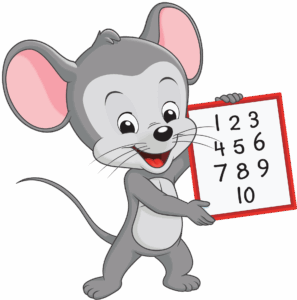

Back-to-School Tips: Build Excitement and Address Anxieties
Going back to school can be exciting and scary all at once! Make sure your child knows it’s okay to have all sorts of feelings about the first day of school and talk about them together.

- Ask your child what they’re most looking forward to in school this year, and what they’re worried about or afraid of. Acknowledge their concerns, and help them see their challenges from new and encouraging angles. For example, if they’re worried about not knowing anyone in their classroom, remind them that it’s a chance to find new friends!
- Read back-to-school books together. Books can help children visualize and understand the school experience, especially those just starting for the first time.
- Role-play unfamiliar scenarios, such as asking for permission to go to the restroom, raising their hand to speak in class, riding the school bus, or talking to other students they don’t know yet.
- Visit the school or classroom. Familiarizing children with the environment can reduce the feeling of being overwhelmed, and nearly all schools welcome families to visit ahead of time. Look for announcements about Meet the Teacher or Back to School events, or contact your school about the chance to visit quietly on your own if your child is very anxious.
- If your child hasn’t seen their school friends all summer, try to arrange a playdate with a few of them to help them get reacquainted before school starts again.
- Speak positively about school, learning, and teachers. Even if you didn’t love everything about school yourself, try to keep your attitude focused on the importance of education and how much fun school has the potential to be. Your child will take their cues from you, especially when they’re young, so set the right example.
- Encourage your child to talk to older children about their own experiences with a school, teacher, or learning experience. They can offer real perspectives on what to expect, and get your child excited about what’s to come.
- If your child is nervous about riding the bus or joining a carpool, try to find them a buddy so they’ll always have someone they know and can sit with or talk to.
- Volunteer in the classroom if your schedule allows or make a point to attend school functions, such as conferences or fun school functions. Consider joining and participating in the PTA/PTO. Being involved in the school community can show support for your child’s education and help you get a sense of what their day is like at school, as well as meet their classmates.

Organizational Back-to-School Tips
Once the school year kicks off, it seems to go like a whirlwind! Staying organized is key to helping everything go smoothly. Try these tips and tricks.
- Review the school calendar and mark key dates (like holidays or breaks) in your own personal calendars. Make note of regular or special early release days that can affect your schedule.
- Create a family calendar to track school events, assignments, and activities. (A large dry-erase board calendar is ideal.) Hang it in a central location and review it regularly.
- Choose a specific place in your child’s backpack where they’ll keep all the forms, flyers, permission slips, etc. they bring home from school. Then, designate a place at home where they’ll place these items as soon as they get home each day (such as a bin or bulletin board), and decide on a time when you’ll check and review them (right after dinner, for instance).
- Post important flyers and reminders on a family bulletin board. Look it over each night, and clean it off every weekend to make room for new papers and ensure nothing is forgotten.
- Create a “Launch Zone” by the front door where kids keep their coats, hats, shoes, backpacks, instruments, athletic gear, etc. Before kids go to bed each night, ensure everything they’ll need for the next day is in place, so they can just grab it and head out the door.
- Use color-coded sticky notes (one color per child) to post reminders in highly visible places, like bathroom mirrors or even inside their shoes!
- Organize school papers and notebooks by color: red for math, green for writing, orange for social studies, etc. (Some teachers have their own color-coded systems, so check with them first.)
- Set aside some weekend time to plan and do meal prep as a family. Get everyone involved in making menus, creating shopping lists, shopping for groceries, and prepping things in advance


Back-to-School Preparation Tips
The days leading up to the first day of school are full of all sorts of important tasks. We’ve highlighted some of the most important here, but you can also use our ultimate Back to School Checklist to make sure you don’t miss a thing!

- Attend orientation, meet-the-teacher nights, and back-to-school events, if offered. Bring a pen and notebook, plus any questions you have for the school or teachers.
- Sign up for school newsletters, apps, and communication platforms, and follow school, teacher, and classroom accounts on social media.
- Complete all registration and required forms early. These are usually available online in the school portal, so register there if necessary.
- Check in with the school about immunization and health requirements. Make appointments for your child to see the doctor and dentist in the month before school starts.
- As soon as your child’s school supply list is available, begin ordering or purchasing what you’ll need when prices are best. Watch for back to school sales and tax breaks, as well as charitable community events like Fill a Backpack.
- Take a complete inventory of your child’s clothes and shoes for the fall season. Shop early for any needed school clothes, uniforms, and shoes.
- Apply for the free/reduced lunch program, or load funds onto the school meal account.
- Don’t forget to budget for school fees, which can add up. Contact your school to get an estimated amount, and use the summer months to save up for what your child will need.

First Day of School Tips for Parents
The big day is here at last! Use these tips to help it go smoothly, and don’t forget to capture the memories!
- Stay calm and confident—even if your child is anxious. Sending kids off on their own is hard for many parents, but it’s important that your child sees your smiling face as they start their first day.
- Prep breakfast, pack lunches and backpacks, and lay out first-day-of school outfits the night before. Put a checklist on the inside of the front door so no one forgets anything.
- Plan some extra time the first morning, since everything is still a bit unfamiliar. This also gives you time for a first-day photo! (Consider making or printing out a “First Day of [grade]” sign for them to hold in advance.)
- Tuck a special note, joke, or snack into their lunch or backpack for them to find later in the day.
- Don’t get angry or impatient if kids cry or struggle. Provide reassurance, and promise that you’ll see them again soon and that they’ll have so much to tell you about their day.
- Plan a special dinner or after-school activity to celebrate their first day. This gives even the most nervous of kids something to look forward to!
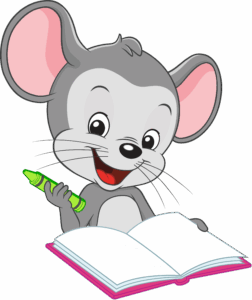


Back-to-School Checklist for Families
Get ready for the first day with to-do lists and school supply lists, as well as a timeline to help you get it all done!
There’s a lot to do when back-to-school time rolls around—it involves so much more than just buying a few supplies and seeing them off on the first day! As a parent, it can feel a little overwhelming and free printable back-to-school checklists can help make it more manageable. Print it out and post it on the fridge, then start tackling the items one by one. When the big day arrives, you’ll find you’ve minimized the stress and maximized the excitement!
Back-to-School Academic and Social Prep
In addition to all the shopping and to-do items on your list, it’s important to be sure your child is prepared academically and socially for the grade they’re entering.
Plan to spend at least a few minutes each day during the summer months reviewing and refreshing the academic skills they’ll need in math, reading, and writing. Perhaps even more importantly, teach and practice key age-appropriate life and social skills.
These articles share insights on the various skills kids need for preschool through second grade and how you can help build them at home:
ABCmouse programs and games are perfect for review and enrichment any time of year! Check out all of our free games for preK to 2nd grade, plus be sure to sign up for a free 30-day trial to explore the full program with your child!
Back to School To-Do Checklist for 2025
✓ One Month Before School Starts
✅ Check school website for back to school information and updates
✅ Confirm the school’s start date and any Meet-the-Teacher or Back-to-School events. Add important dates to your personal calendar.
✅ First Day of School: ________________
✅ Schedule medical appointments and complete any needed medical paperwork for the school. Request a second set of medications to have on hand at school if needed.
✅ Doctor: _______________
✅ Dentist: _______________
✅ Other: ________________
✅ Update or register in the school’s parent portal
✅ Follow school social media pages and register for communication apps
✅ Apply for free/reduced lunch, if needed
✅ Arrange before/after school care, if needed
✅ Review last year’s clothes and shoes and donate what’s outgrown
✅Shop for uniforms or school clothes and shoes
✅ Obtain supply list from school or teacher when available
✅ Watch for back-to-school sales or tax breaks
✅ Explore and budget for school fees (academic and extracurricular)
✅ Start your ABCmouse free trial, and spend 15 minutes daily on academic games and learning
✅ Other: ___________________________________
✅ Other: ___________________________________
Tip: For preschoolers or kindergarteners who are still fine-tuning bathroom habits, this is the time to review skills like asking for permission to use the bathroom, wiping, and hand washing.

✓ Two Weeks Before School Starts
✅ Confirm or arrange transportation (bus info, carpool, walking route, etc.)
✅ Purchase school supplies based on list or needs
✅ Buy new backpack, lunchbox, water bottle or clean existing ones
✅ Schedule back-to-school haircut
✅ Place/Time: __________________________
✅ Label all supplies, clothing, lunchboxes, backpacks, etc.
✅ Discuss any concerns or fears your child has about going back to school. Try reading a few of our Back to School Books to help ease jitters and build excitement for the first day.
✅ Review and practice recommended school safety protocols
✅ Set goals and expectations for the year ahead for your child (and yourself!)
✅ Organize areas of your home that you’ll need to quickly and frequently access, such as hall closets, mudrooms or dropzones, the pantry, and desk or work areas.
✅ Continue spending time daily on academic games or enrichment with ABCmouse or other learning methods
✅ Other: ___________________________________
✅ Other: ___________________________________
Tip: The first few weeks of school are loaded with learning and new experiences for kids, which can leave them especially tired. Having favorite snacks and meals planned can help make the days go more smoothly. Now is a good time to talk to your child about foods or activities they’ll look forward to so you have time to plan for the first week back.
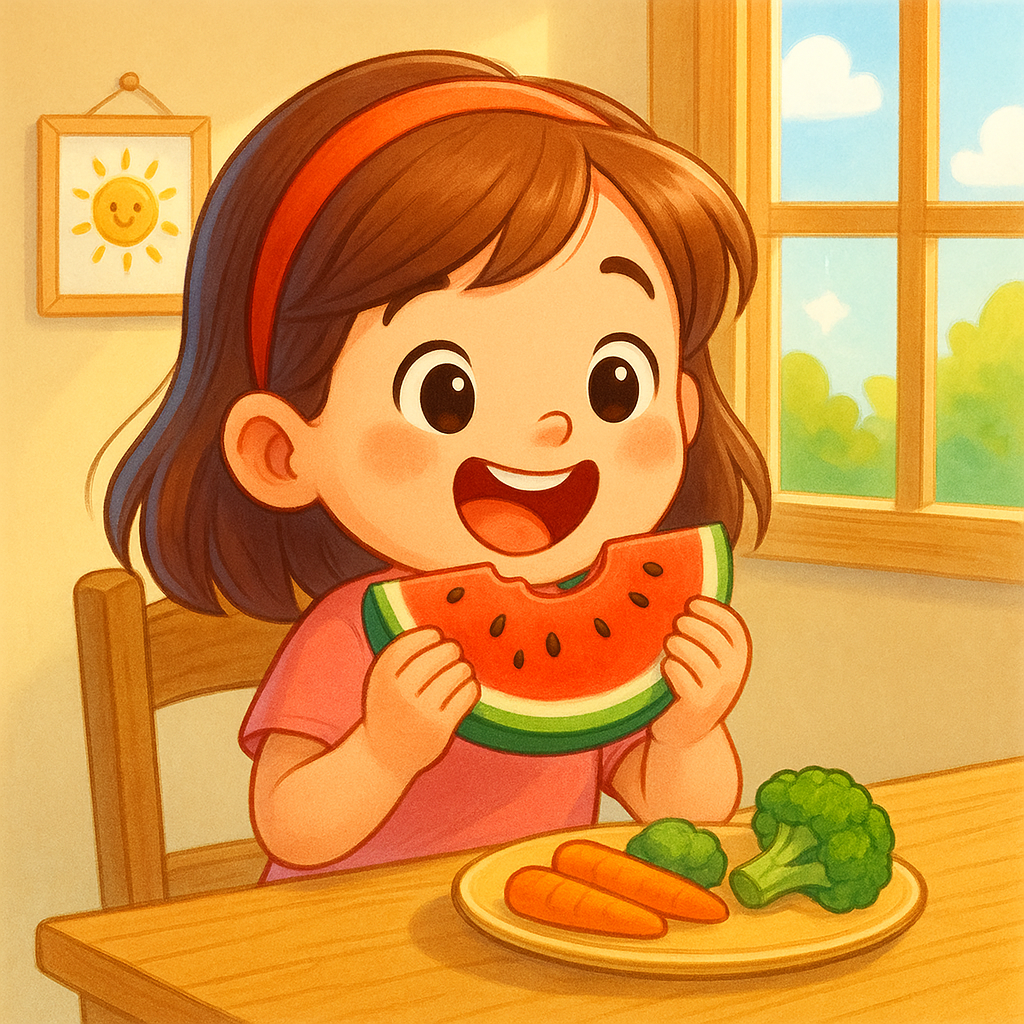
✓ One Week Before School Starts
✅ Confirm school start time and classroom assignment or class schedule
✅ Start and End Times: ________________________
✅ Teacher/Homeroom: _________________________
✅ Attend orientation, open house, or meet-the-teacher events (if scheduled)
✅ Date/Time: ______________________
✅ Test out or confirm transportation routine
✅ Notes: ______________________________________
✅ Review emergency contacts and update school forms if needed
✅ Organize paperwork: physicals, allergy plans, medication forms
✅ Confirm before/after school care arrangements
✅ Update your personal calendar with important school dates
✅ Start practicing the school-year bedtime and morning routine
✅ Set up or refresh homework/study area at home
✅ Decide where you’ll keep important papers that come home from school and create a system to note papers to sign and return to school.
✅ Stock up on breakfast, lunch, and snack items
✅ Plan and shop for at-home meals for first week of school
✅ Pay school fees and fund school lunch account if needed
✅ Plan and launder school outfits or uniforms for the first week
✅ Fill out monthly family calendar and hang in a central location
✅ Print out Back-to-School coloring pages and worksheets as fun and simple activities to help get ready for the big day.
✅ Other: ___________________________________
✅ Other: ___________________________________
Tip: Discuss school routines, such as wake up time and drop off and pick up times with your partner, co-parents, or babysitter to ensure they know daily schedules.
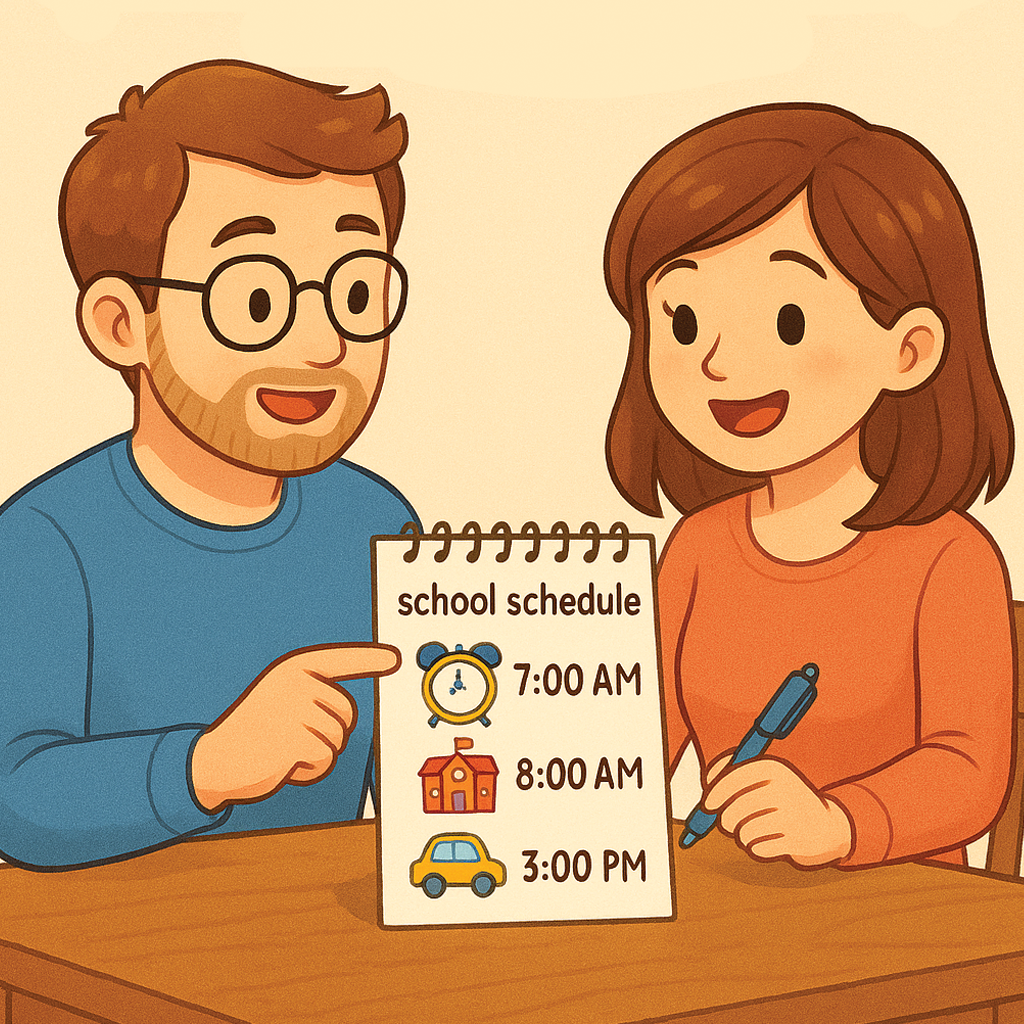
✓ Day Before First Day of School
✅ Lay out clothes for morning
✅ Pack lunch or review procedure for school cafeteria lunch
✅ Pack backpack with supplies
✅ Prepare “First Day of [Grade]” signs for photos
✅ Set alarm clocks (add a few extra minutes to ensure you’re not rushed)
✅ Review morning routine
✅ Verify end-of-day plans for pickup, bus ride, walk home, etc. with your child
✅ Plan for first-day breakfast
✅ Read a back-to-school book at bedtime to reassure or build excitement
✅ Other: ___________________________________
✅ Other: ___________________________________
✓ First Day of School
✅ Get up a little early and follow your morning routine
✅ Eat a good breakfast or remind student of school breakfast procedures
✅ Take some First Day photos
✅ Be ready to leave a little early for bus stop, walk, or drop-off line
✅ Confirm with your student how they will get home at the end of the day
✅ Plan a celebration that evening to mark the special day!
✅ Other: ___________________________________
✅ Other: ___________________________________
Back to School Shopping Checklist for 2025
Tip: Consult your school or teacher for exact requirements before stocking up. Also, check your household office supplies or look through last year’s supplies to see what your child can reuse.
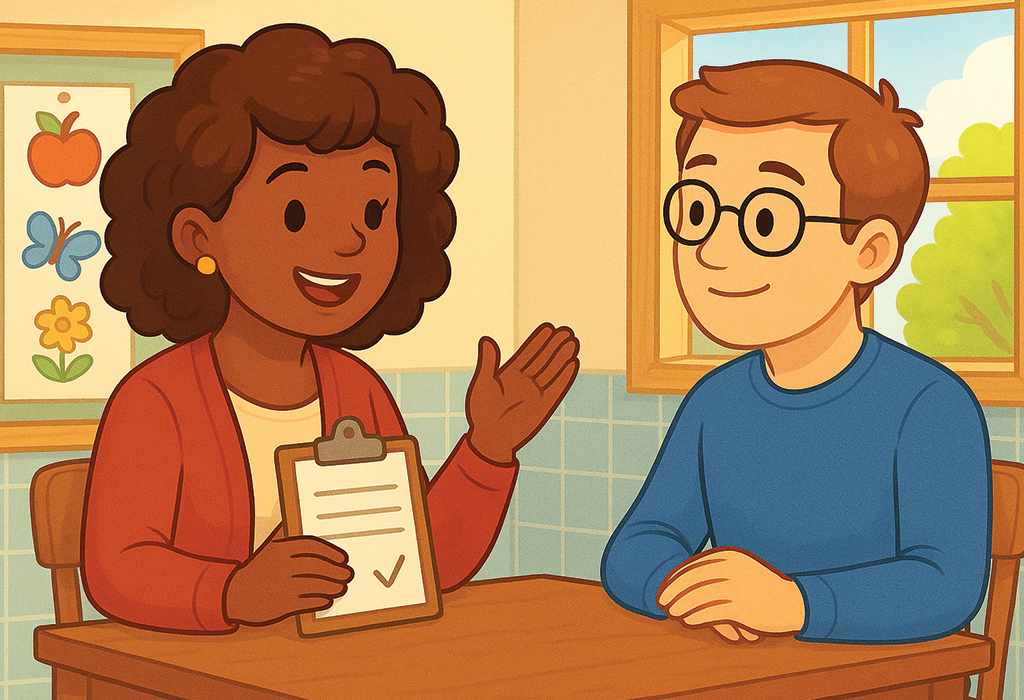
✓ Basic School Supplies
✅ #2 pencils
✅ Pens
✅ Erasers
✅ Highlighters
✅ Crayons or colored pencils
✅ Washable markers
✅ Dry erase markers
✅ Glue sticks or white glue
✅ Scissors
✅ Ruler, protractor, compass
✅ Pencil sharpener
✅ Pencil case or supply box
✅ Spiral notebooks or composition books
✅ Loose-leaf notebook paper (wide or college ruled)
✅ 3-ring binders
✅ Dividers with tabs
✅ Folders
✅ Index cards
✅ Sticky notes
✅ Assignment planner or agenda
✅ Other: ___________________________________
✓ Technology & Accessories
✅ Laptop or tablet for home use (if not provided by school)
✅ Headphones or earbuds (with mic if needed)
✅ USB flash drive
✅ Calculator
✅ Stylus (if using a touchscreen device)
✅ Laptop case or tablet cover (if needed)
✅ Charging cable or portable charger
✅ Other: ___________________________________
✓ Backpacks & Lunch Supplies
✅ Durable backpack
✅ Lunchbox or lunch bag
✅ Reusable water bottle
✅ Ice packs for lunchbox
✅ Meal items and snacks
✅ Reusable sandwich/snack bags or containers
✅ Other: ___________________________________
✓ Clothing & Personal Items
✅ School clothes or uniforms
✅Shoes
✅ PE clothes and/or shoes (sneakers)
✅ Jacket/Coat
✅ Umbrella
✅ Hand sanitizer or sanitizing wipes
✅ Tissues (individual packs or boxes)
✅ Personal hygiene products
✅Other: ___________________________________
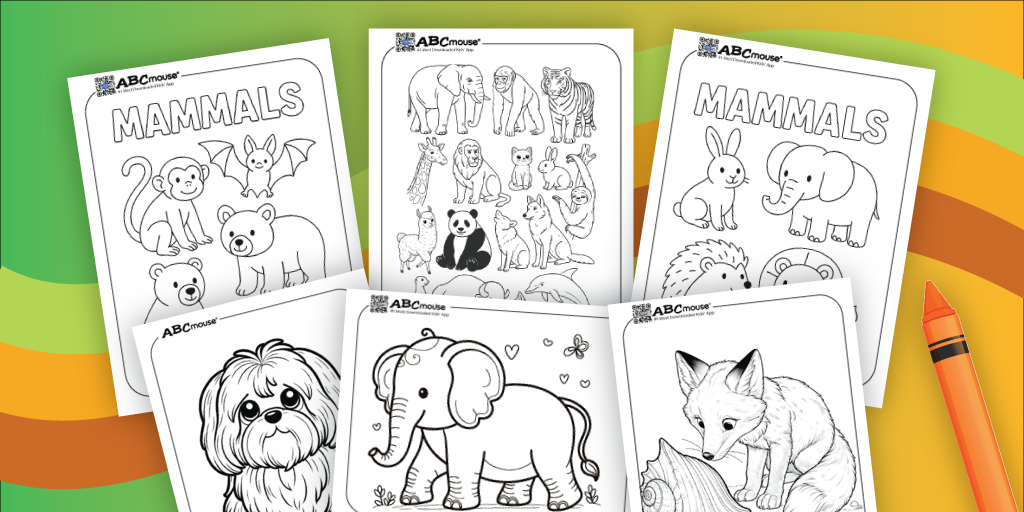
Mammals Coloring Pages for Kids (Free Printables)
Animal lovers will go wild over this collection of over 300+ free printable mammal coloring pages for kids! These pages feature an extensive selection of beloved animals, including everyday favorites like dogs, cats, and horses, woodland creatures like bunnies and foxes, and more unique creatures like sloths, dolphins, and llamas.
Each featured group allows you to print the entire collection of animal coloring pages or pick and choose your favorites to print out individually. Either way, every page is free to download and print as a fun activity for kids at home, in the classroom, or on the go. Be sure to check out our ideas to extend learning about mammals at the bottom of the page.
Find even more mammal coloring pages below!
Learn more about animals with ABCmouse!
Marvelous Mammal Activities
Recommended for: Kids of all ages
⭐ Make a Mammal Habitat Mural
Gather your child’s colored mammal pages and create a giant mural on a poster board. Group the animals by their natural habitats like forest, desert, or jungle for a fun way to explore ecosystems while showcasing their art.
⭐ Mammal Tales
Bring even more creativity to these coloring pages by adding in some storytelling practice. Have your child pick a few mammal coloring pages to use as inspiration for an animal-themed tale, using each coloring page to illustrate their story. If your child is old enough, have them write their story on the bottom. If they’re not writing yet, have them narrate their tale to you.
⭐ Be a Mammal Researcher
These coloring pages may inspire curiosity about each of these creatures. Embrace your child’s interest in animals and talk about the different places they might find each animal. Then, do some online research or head to the library to learn more about the creatures they’re most interested in.
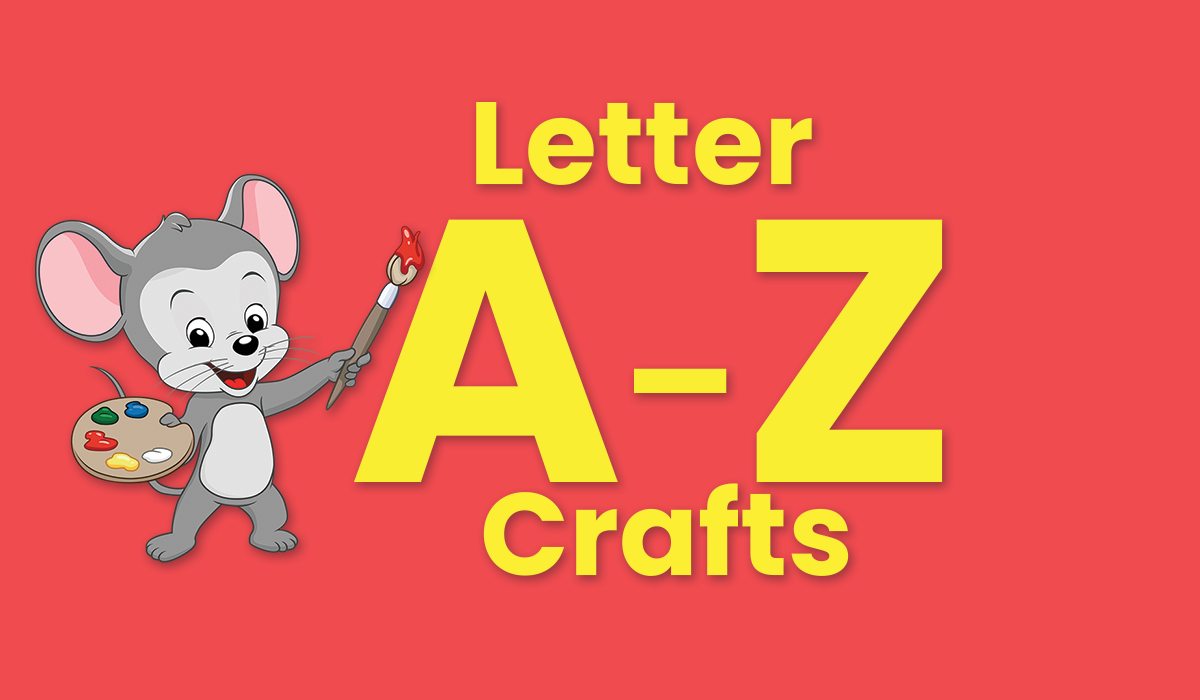
Preschool Alphabet Crafts and Letter Activities
Make learning the ABCs a blast! These A–Z crafts and activities turn every letter of the alphabet into hands-on fun.
Alphabet crafts and activities provide an engaging, hands-on way to enhance letter learning, which is the first step in learning to read. Incorporate these simple, clever ideas into your child’s daily or weekly routine to add playfulness to learning and help them better connect with and remember each letter’s unique shape and sound.
Pick and choose which letters you’d like to work on from below or work your way through the entire alphabet.
Each letter craft and activity is designed for preschoolers and kindergarteners to complete with adult supervision.
A to Z Crafts and Activities for Preschool and Up
Select a letter below to see simple crafts and activities that will help kids enjoy learning its shape and sound.
More Free Alphabet Activities & Printables
⭐ ABCmouse Alphabet Songs
We’ve got a fun and catchy song for all 26 letters of the alphabet. Find them all here, along with videos and their lyrics so kids can sings along!
⭐ A–Z Word Lists
Help kids practice with letter sounds with these printable lists of words for each letter of the alphabet.
⭐ Alphabet Worksheets
These A–Z alphabet worksheets for preschoolers offer an easy way for kids to explore letter shapes and sounds on the go, in the classroom, or at home.

-
How To Make Your Very Own Rainbow In a Cup
Embark on a colorful scientific adventure with this Rainbow in a Cup experiment, perfect for young curious minds. This hands-on activity not only unveils a vibrant…
-
Try This STEM Activity for Kids: Popsicle Stick Ferris Wheel
Embark on a thrilling educational adventure with this DIY Popsicle Stick Ferris Wheel project, perfect for young minds keen on exploring STEM concepts. This activity melds…
-
Learn How to Create a Paper Plate Panda
Dive into a world of creative fun with this Paper Plate Panda craft project. It’s an imaginative adventure that blends artistic expression and playful exploration, ideal…
-
Easy Thanksgiving Craft for Kids: Egg Carton Turkey
Embark on a whimsical crafting journey creating Colorful Butterflies using simple materials. This delightful activity not only nurtures creativity but also brings a slice of nature’s…
-
Thanksgiving Craft for Kids: Pine Cone Turkey
Indulge in the festive spirit of Thanksgiving with this delightful Pine Cone Turkey craft for kids. This activity not only sparks creativity but also aids in…
-
Easy Thanksgiving Craft for Kids: Bead Corn Craft
Enjoy this fun festive thanksgiving craft from ABCmouse! This exciting activity for kids is great for helping young children practice their dexterity and counting. This beaded…

Differentiating Instruction and Engaging Families with Technology
Table of Contents – Jump to Each Section
“My students were off the charts. In fact, the computer kept telling me as I was entering their scores that they weren’t valid scores. They most likely couldn’t have scored that high for this age. But it was child after child after child that kept having a high score.”
—Julie Choudhary, Escondido, CA
Julie Choudhary, a 25-year-veteran kindergarten teacher, returned to her hometown of Escondido, California, to teach in the public schools in 2002 because of her commitment to the community. Escondido is a city of 150,000 in inland Southern California; its population is approximately 50% Latino, with a significantly lower median household income and higher poverty rate than the rest of the state. Julie’s students are primarily from low-income families and learn English in her classroom.
2011–2012: Differentiating Instruction
During the 2011–2012 school year, one of Julie’s students repeatedly requested she bring ABCmouse.com Early Learning Academy into the classroom, and Julie explored it for the first time mid-year. “It took me five minutes to register my class. And it was the easiest and most worthwhile thing I’ve done.”
Julie introduced the comprehensive early learning website to her class primarily as a language model. “It was fascinating. I would have students who were almost non-verbal using scientific or social studies words that I wouldn’t think a five-year-old would use.”
Research Insights:
Significant vocabulary gaps have been found between children living in English-speaking and non-English-speaking homes.1 Research supports the strategies of teaching the meaning of basic words and providing ample review with student-directed reinforcement activities.2
Julie assigned every child an individualized lesson on ABCmouse.com each day, according to the areas of need indicated by a standardized assessment administered at the beginning of the year. “They have to do one complete lesson every day. And then they’re allowed to go to their bedroom or their hamster on ABCmouse.com and to use their tickets and go shopping. Because that’s exciting to the children . . . .”
Julie discovered that she could differentiate her instruction with ABCmouse.com’s Lesson Builder, which allowed her to select and assign specific learning activities for individual students, groups of students, or the entire class. Julie attributed her students’ success on the end-of-year assessments to her ability—using ABCmouse.com—to meet their individual academic needs.
Research Insights:
Differentiated instruction allows teachers to meet the needs of diverse students through a variety of teaching strategies, including dynamic grouping, targeting multiple strengths, and implementing different types of activities.3
“As in any class, you have students that are at different levels. So, I’ll have a group lesson where maybe students are working on subtraction at the beginning of the year. Or, I’ll have a whole group lesson where students are working on a sight word or a word family. It just really depends on what the concept is that I am working on. I’ll look at the DIBELS4 data and I’ll go to the Lesson Builder and I’ll pull [activities related to] those concepts into a student’s file.”
2012–2013: Engaging Families
The next fall, Julie began a one-to-one iPad program and opened up her classroom before and after school for students to use ABCmouse.com.
Research Insights:
Research demonstrates that family engagement is one of the important keys to educational success.5 Children achieve at higher levels in math, language, and literacy when their families are involved in their education.6 However, many parents hesitate because they aren’t confident about how to best support their children.7 Similarly, teachers welcome family involvement, yet are uncertain if this is a reasonable expectation.8
Not only did the students in her class come to learn on ABCmouse.com, they also brought their parents and their siblings to use the website. Julie had found a unique way to engage families in the education of their children through technology, demonstrating that educational technology has the potential to open the virtual doors of the classroom for parents and foster a dialogue between teachers and families.
“I had parents knocking on the door early in the morning to come in and use ABCmouse.com, or staying late in the afternoon. Families that weren’t in my class would come in to use the computer. I have families coming in and begging for their preschoolers to be on the site. I have toddlers to kindergarteners and even some older sisters and brothers using ABCmouse.com, either on the iPad or on the computer. And the parents are sitting with their kids—with the whole family. It’s been amazing, and the classroom is packed every day! ABCmouse.com helped make up a huge [family engagement] deficit in our classroom.”
Research Insights:
Position statements on both family engagement (2009) and technology (2012) from the National Association for the Education of Young Children (NAEYC) promote the importance of communication regarding educational goals and the provision of age appropriate online activities to achieve those goals.9 The early childhood years are an important time to develop an understanding of the value of education for both children and their families. It is also a time when positive patterns of interaction between families and teachers can be established.
Julie discovered that the website’s capability of providing all navigation options and instructions in Spanish helped parents understand what their children were learning in school and exposed the entire family to English vocabulary. “The parents are learning to speak English and to read and write, sometimes for the very first time, right along with their children.” Speaking about one student’s parents, Julie said:
“His dad was so worried and he told me, ‘No English, Señora, no English.’ The son cried for the first week because the only words he knew were ‘no’ and ‘bathroom.’ His family came in every day. They didn’t have Internet at home. But his mom was bringing him and his younger brother before and after school every day, and if mom couldn’t make it, dad changed his schedule at the farm to come in with them. And within two months, my student was joking around, laughing, and teaching, and you wouldn’t know that he had zero English at the beginning of the school year. His mom was picking up on English and feeling more confident. You could just tell in the way she carried herself when she walked in the classroom.”
The impact was remarkable. Parents began initiating conversations with Julie about their children’s educational progress. The students were staying on task and focused. “I have twenty-five little bodies and twenty-five different things going on in the room. At the computers, the kids have their headphones on; they’re all engaged. They might be talking or singing back at the computer but they’re all focused and doing exactly what they need to be doing.”
Impact on Student Achievement
At the end of 2011–2012, her first year using ABCmouse.com, Julie was surprised by the impact of the website on her students’ achievement. “Their letter naming fluency and their concept of sound fluency increased significantly as the year went on.” Overall, Julie’s class improved by more than 50% on multiple early reading skills from the middle to the end of the year, with most of her students at least doubling their scores on one or more skills.
Julie’s use of ABCmouse.com to differentiate instruction and engage families during the 2012–2013 school year contributed to further positive outcomes for her students. At the beginning of the school year, 32% of her students were significantly below benchmark in literacy; by the end of the year, only 9% were in that category. And Julie’s students’ gains from the middle to the end of the year on key literacy skills were more than twice the national average (see chart).
Julie opened the door of her classroom and provided educational technology to open up a new world of learning for her students and their families. Her success in differentiating instruction and engaging families using ABCmouse.com led to academic success for Julie’s students.
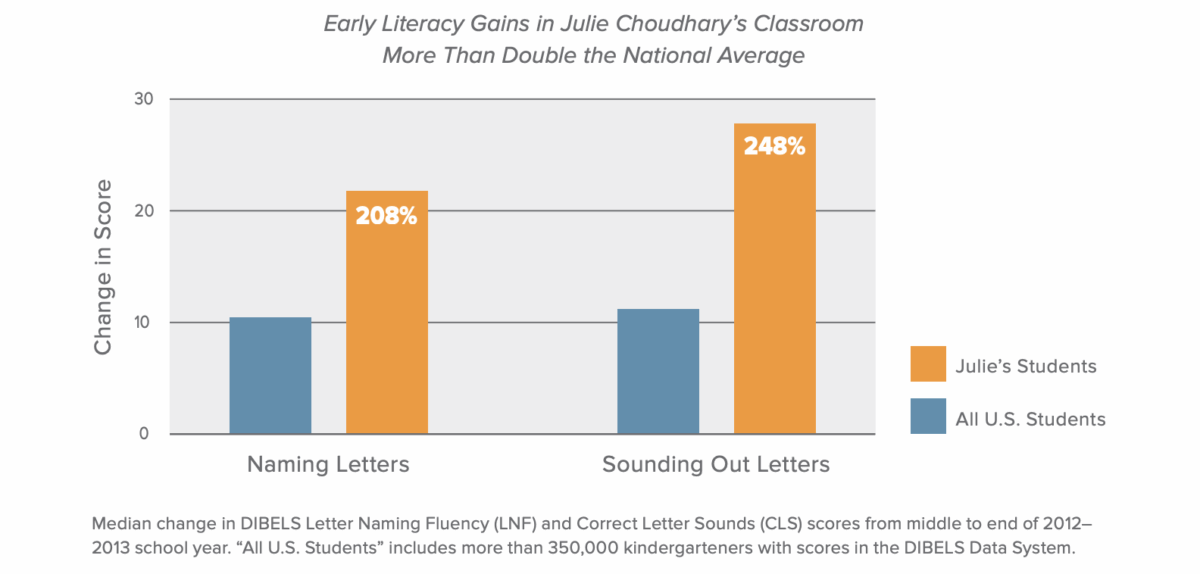
See more research highlighting the proven benefits of digital game-based learning, as well as it’s positive impact on children’s cognitive development and social-emotional learning.
Notes:
† † Director of Research and Educational Partnerships, Age of Learning, Inc.; formerly Assistant Professor and Director of Early Childhood Education Master’s Program, Loyola Marymount University
1 National Center for Education Statistics, 2003
2 August, Carlo, Dressler, & Snow, 2005
3 Tomlinson, 2001
4 The Dynamic Indicators of Basic Early Literacy Skills (DIBELS) is a leading assessment of language and literacy skills for kindergarteners. http://dibels/uoregon.edu/
5 Beveridge, 2005; Esler, Godber, & Christenson, 2002; Hara, 1998; Jeynes, 2007
6 Griffith, 1996; Sui-Chu & Willms, 1996; Marcon, 1999; Sheridan, Knoche, Kupzyk, Edwards, & Marvin, 2011
7 Eccles & Harold, 1993; DePlanty, Coulter-Kern, & Duchane, 2007
8 Comer, 2001
9 National Association for the Education of Young Children, 2009; 2012
References:
August, D., Carlo, M., Dressler, C., & Snow, C. (2005). The critical role of vocabulary development for English language learners. Learning Disabilities Research and Practice, 20(1), 50–57. http://dx.doi.org/10.1111/j.1540-5826.2005.00120.x.
Beveridge, S. (2005). Children, families and schools: Developing partnerships for inclusive education. London: Routledge/Falmer.
Comer, J. P. (2001). Schools that develop children. The American Prospect, 12(7), 3–12.
DePlanty, J., Coulter-Kern, R., & Duchane, K. A. (2007). Perceptions of parent involvement in academic achievement. The Journal of Educational Research, 100(6), 361–368.
Eccles, J. S. & Harold, R. D. (1993). Parent-school involvement during the early adolescent years. Teachers College Record, 94(3), 568–587.
Esler, A. N., Godber, Y., & Christenson, S. L. (2002). Best practices in supporting home-school collaboration. In A. Thomas & J. Grimes (Eds.), Best Practices in School Psychology IV, (pp. 389–411). Washington, DC: National Association of School Psychologists.
Griffith, J. (1996). Relation of parental involvement, empowerment, and school traits to student academic performance. Journal of Educational Research, 90, 33–41.
Hara, S. R. (1998). Parent involvement: The key to improved student achievement. School Community Journal, 8(2), 9–19.
Jeynes, W. H. (2007). The relationship between parental involvement and urban secondary school student academic achievement: A meta-analysis. Urban Achievement, 42(1), 82–110.
Marcon, R. (1999). Differential impact of preschool models on development and early learning of inner-city children: A three-cohort study. Developmental Psychology, 35(2), 358–375.
National Association for the Education of Young Children (2009). Family engagement, diverse families, and early childhood education programs: An integrated review of the literature. Retrieved from http://naeyc.org/files/naeyc/file/research/FamEngage.pdf.
National Association for the Education of Young Children (2012). Technology and interactive media as tools in early childhood programs serving children from birth through age 8. Retrieved from http://naeyc.org/files/naeyc/PS_technology_WEB.pdf.
National Center for Education Statistics (2003). The nation’s report card. Retrieved from http://nces.ed.gov/nationsreportcard/pdf/main2003/2005453.pdf.
Sheridan, S. M., Knoche, L. L., Kupzyk, K. A., Edwards, C. P., & Marvin, C. A. (2011). A randomized trial examining the effects of parent engagement on early language and literacy: The getting ready intervention. Journal of School Psychology, 49(3), 361–383.
Sui-Chu, E. H. & Willms, J. D. (1996). Effects of parental involvement on eighth-grade achievement. The Sociological Quarterly, 69(2), 126–141.
Tomlinson, C. A. (2001). How to differentiate instruction in mixed-ability classrooms (2nd Ed.). Alexandria, VA: ASCD.
TM & © 2014 Age of Learning, Inc. All rights reserved. The names of other companies, products, and services are the property of their respective owners.

An Effective Digital Learning Resource Can Significantly Improve Motivation, Engagement, and Self-Confidence
Case study highlights how the benefits of ABCmouse can extend beyond academics.
Table of Contents – Jump to Each Section
“Since using ABCmouse.com, I’ve seen Alex blossom. He’s more confident; he’s more outgoing. He knows that he’s learning, and he’s proud of himself for it.”
—Laura Bryant, Las Cruces, New Mexico
ABCmouse Case Study Overview
Motivation, excitement about learning, and self-confidence as a learner are qualities most parents would love to see more of in their children. Whether a child is at-risk and struggling to meet early learning milestones or on target with expectations, fostering a positive approach to learning can substantially improve school readiness and long-term academic outcomes.
As parents increasingly turn to educational websites and apps to help their children build academic skills at home, they may not appreciate that these tools vary widely in quality and effectiveness. High-quality and effective digital learning resources can make a significant impact not only on the development of key academic knowledge, skills, and abilities, but also on critical non-academic factors, including motivation, focus, engagement, and self-confidence. The experiences of two families illustrate these effects.
Research Insights:
Researchers find that it is critical for educators and parents to acknowledge the role of social and emotional competencies in learning.1 Heckman suggests that social-emotional skills, self-discipline, and other non-academic competencies contribute to academic skill formation as well as later success in life.2
Michael G. was born with a congenital heart defect and spent the first eight months of his life in and out of the hospital. By the time he turned two, his mother Nicole was worried that he was developmentally behind his peers.
“When your kid is not meeting milestones, they don’t tell you anything except, ‘He’ll get there. He’ll catch up.’ So, I was looking for something to help him catch up because eight months to me is a pretty big gap.”
Jennifer M. is the mother of three-year-old Alex. Though she and her husband were confident that Alex was typical for his age, they wanted to create an enriched home environment in which Alex would develop a lifelong love of learning.
“Alex is your typical three-year-old boy . . . but there was still something in me that thought, what else could I give my son? What else can I do to help him grow?”
Both Nicole and Jennifer were looking for digital learning resources to help their children, though for different reasons. After finding numerous other education websites and apps ineffective, they both turned to ABCmouse.com because of its comprehensive academic curriculum. In Nicole’s experience, “A lot of apps are just games; they don’t have educational value.” According to Jennifer, “What I’ve noticed with the other apps is that they’re more static; there’s just a couple of activities to do and it’s not that interesting to a three-year-old boy.”
Nicole and Jennifer discovered that the benefits of using ABCmouse.com transcended academics and contributed to major gains they hadn’t expected in their children’s motivation, focus, engagement, and self-confidence.
Strengthening Motivation to Learn
For a child struggling to meet developmental milestones, motivation plays a critical role in facilitating progress. With ABCmouse.com, Nicole could see Michael beginning to enjoy learning for its own sake, and she recognized the benefits of a resource that increased her son’s motivation to learn.
“It’s not a job. It’s not that he is working hard at learning and it’s a task that he has to do. He wants to do it. He wants to play. He wants to learn. ABCmouse.com flicks that switch so that they start learning and they want to keep learning.”
She also discovered that Michael was motivated by ABCmouse.com to challenge himself to learn more advanced skills.
“Even if he plays the same game, he’ll play it over and make it harder. He started off doing very basic puzzles, and he’s already up to difficulty level seven. If something is a little bit too complicated for him, that’s when he’ll come and get me and have me help him play the game. Within a few rounds of playing the game, he’s got it down. He loves challenging himself!”
Research Insights:
The appropriate stage of difficulty of a task for each individual child is a key factor in triggering motivation. If it is too easy, completion of the activity may have little value. If it is too difficult, the challenge can become overwhelming and the rate of success very low.3 Moreover, early research into computer use with young children found that digital technology facilitates independence and a sense of control over learning that increases motivation and self-esteem.4
Jennifer also noticed the positive impact ABCmouse.com had on her son’s motivation. “After starting ABCmouse.com, we saw a major change. He just blossomed. I just saw his enthusiasm for learning
skyrocket!” Alex responded to ABCmouse.com’s builtin rewards system: “He loves building his hamster cage with his tickets. He loves his fish tank. He enjoys going on his learning path and making progress and earning rewards along the way.”
Jennifer saw Alex’s increased motivation to learn leading to gains in academic subjects: “We saw results immediately, within weeks, and I didn’t expect that. He started . . . recognizing letters and numbers, and then shortly thereafter, reading and writing. And that was mind-blowing to me.”
The Power of Engagement
As with motivation, focus and engagement with learning in early childhood are key to school readiness and academic achievement, and effective digital learning resources can make a significant difference in developing these cognitive processes.
Jennifer originally started Alex on ABCmouse.com to help him learn his letters and numbers. She was overjoyed when she also saw Alex growing in his social-emotional abilities and flourishing at school. He began participating more in school activities, and his teachers reported that he had started playing with a wider range of classmates and was becoming more comfortable in preschool.
Jennifer credits much of Alex’s growth to how ABCmouse.com mimics a classroom setting, preparing him for the structured nature of school. Armed with these virtual experiences, Alex approached the real classroom with more focus and participated more in the social and academic environment.
“Being exposed to preschool and then also to ABCmouse.com has helped him to understand that at times he does need to sit down, focus, and learn the activity that’s being presented. It’s amazing that a young boy with tons of energy is able to sit and focus for 15, 20 minutes at a time and learn. And it’s not something I’m forcing him to do; it’s something he wants to do. And that’s magical; somehow ABCmouse.com magically hones him in, and that’s a great thing!”
Research Insights:
Children who learn to regulate their emotions and actions are better able to avoid distractions, focus on appropriate tasks, and process the necessary information to gain new knowledge or skills and accomplish goals.5 Educational technology has been found to increase on-task behavior,6 the expression of positive emotions,7 active participation,8 and an excitement and engagement with learning9 as compared to more traditional pedagogical techniques.
Like Alex, after Michael began using ABCmouse.com at home, he became more engaged in learning at school. Nicole heard from his preschool teachers that he’s “the only child at circle time who will jump up and down and enthusiastically answer every single question.” Nicole attributed the academic and non-academic gains that Michael was showing both at home and in the school environment to his use of ABCmouse.com. “I watched him go from disengaged to deeply engaged and focused . . . . He’s running around and being a crazy two-year-old, and then he’ll sit down and focus on ABCmouse.com. It’s unbelievable how attention-getting it is!”
Growing Self-Confidence
Self-confidence as a learner is another critical factor that contributes to school readiness and success. Jennifer had noticed that Alex could be shy and nervous in new environments. Her biggest surprise with ABCmouse.com was its impact on Alex’s self-confidence, and how that changed his behavior at school:
“I feel like ABCmouse.com has been a major confidence booster. Since using ABCmouse.com, I’ve seen Alex blossom. He’s more confident; he’s more outgoing. He knows that he’s learning, and he’s proud of himself for it. He started to feel more comfortable in his social relationships and he became friends with a lot more kids. . . . I see him interacting with his friends in class and I see him talking to his teachers. . . . He just seemed to feel good about himself.”
Research Insights:
Beliefs about self-efficacy have long been established as strongly connected to motivation and student achievement.10 Students who believe that they are smart, are skilled, and will achieve success are more likely to master academic concepts and have positive learning outcomes. A review of more than 300 research studies concluded that technology has a positive effect on student attitudes about learning, their self-confidence, and their self-esteem.11
Nicole also reported major gains in Michael’s confidence after using ABCmouse.com:
“As he’s gone through ABCmouse.com, he’s transformed into this outgoing, funny, whirlwind personality. He just loves to talk to people now. He’s gone from a shy, reserved kid to who he is and who he will be. He’s proud of who he is and what he can accomplish. He’s got this incredible self-esteem that you don’t often see at his age. He knows that he’s smart.”
Jennifer and Nicole’s experiences with ABCmouse.com echo the results of a 2014 survey of nearly 5,000 parents with children using ABCmouse.com, sponsored by Age of Learning. The overwhelming majority of parents reported that ABCmouse.com had a meaningful positive impact on their children’s approaches to learning, in addition to helping them learn language, literacy, and math skills and concepts.
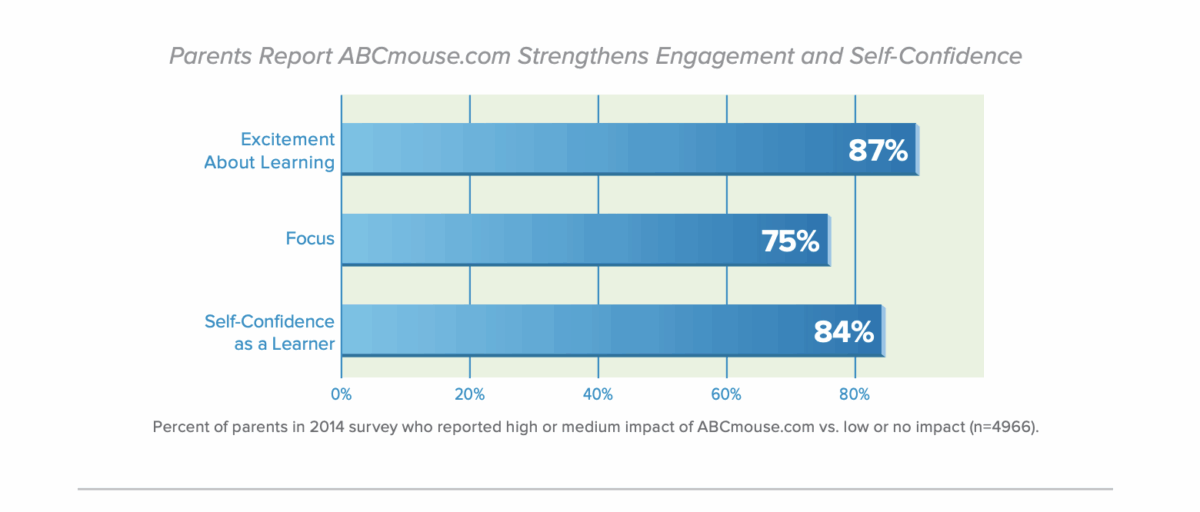
Michael and Alex were at different stages of development when they began using ABCmouse.com. Michael was trying to catch up to the level of his peers and Alex was on target with his milestones. Their parents had different intentions for the role of ABCmouse.com; yet both families were impressed with the significant academic and non-academic progress they observed in their children.
With ABCmouse.com, Alex and Michael strengthened their motivation to learn, became more engaged with learning, and grew confident as learners. Importantly, the strengths that they built in the virtual world of ABCmouse.com carried over into the classroom. Nicole and Jennifer were thrilled to find that ABCmouse.com contributed to their children’s school readiness and achievement in school. Effective digital resources that integrate an academic curriculum with social-emotional and cognitive components can meaningfully improve school readiness and success.
See more research highlighting the proven benefits of digital game-based learning, as well as it’s positive impact on children’s cognitive development and social-emotional learning.
Notes:
† Director, Research and Educational Partnerships, Age of Learning, Inc.; formerly Assistant Professor and Director of Early Childhood Education Master’s Program, Loyola Marymount University
1 Zins, Weissberg, Wang, & Walberg, 2004
2 Heckman, 2006
3 Eccles & Wigfield, 2002
4 Ainsa, 1989; Clements & Swaminathan, 1995; Lee & Houston, 1987
5 McClelland, Acock, & Morrison, 2006
6 Bergin, Ford, & Hess, 1993
7 Hyson, 1985
8 Lepper & Gurtner, 1989 9 Liu, 1996
References:
Ainsa, T. (1989). Effects of computers and training in Head Start curriculum. Journal of Instructional Psychology, 16, 72–78.
Bergin, D. A., Ford, M. E., & Hess, R. D. (1993). Patterns of motivation and social behavior associated with microcomputer use of
young children. Journal of Educational Psychology, 85(3), 437–445.
Clements, D. H., & Swaminathan, S. (1995). Technology and school change: New lamps or old? Childhood Education, 71, 275–281.
Eccles, J. S. & Wigfield, A. (2002). Motivational beliefs, values, and goals. Annual Review of Psychology, 53, 109–132.
Heckman, J. J. (2006). Skill formation and the economics of investing in disadvantaged children. Science, 312, 1900–1902.
Hyson, M. C. (1985). Emotions and the microcomputer: An exploratory study of young children’s responses. Computers in Human
Behavior, 1, 143–152.
Lee, M. W., & Houston, E.S. (1987). Computers in preschools: Why and why not! Journal of Human Behavior and Learning, 4(1),
10–13.
Lepper, M. R., & Gurtner, J. (1989). Children and computers. American Psychologist, 44(2), 170–178.
Liu, M. (1996). An exploratory study of how pre-kindergarten children use the interactive multimedia technology: Implications for
multimedia software design. Journal of Computing in Childhood Education, 7(1–2), 71–92.
McClelland, M. H., Acock, A. C., & Morrison, F. J. (2006). The impact of kindergarten learning-related skills on academic
trajectories at the end of elementary school. Early Childhood Research Quarterly, 21, 471–490. doi: 10.1016/j.ecresq. 2006.09.003
Muller, A. A., & Perlmutter, M. (1985). Preschool children’s problem-solving interactions at computers and jigsaw puzzles. Journal of
Applied Developmental Psychology, 6, 173–186.
Zins, J., Weissberg, R. P., Wang, M. C., & Walberg, H. J. (Eds.). (2004). Building academic success on social and emotional learning: What does the research say? New York: Teachers College Press.
TM & © 2015 Age of Learning, Inc. All rights reserved. The names of other companies, products, and services are the property of their respective owners.
ABCmouse.com Early Learning Academy Receives Prestigious Editor’s Choice Award from Children’s Technology Review
January 11, 2011 (Glendale, CA) – ABCmouse.com Early Learning Academy–a pioneering full online curriculum preschool through kindergarten educational website launched publicly in November 2010—recently received the prestigious Editor’s Choice Award from Children’s Technology Review (CTR), a monthly publication that features the latest products and trends in children’s interactive media.
CTR’s review process is designed to broadly measure five factors that generally apply to most children’s interactive media experiences: ease of use, educational value, entertainment value, design features, and overall value. Global variables strongly influence the ratings in each of these factors, especially “smart” features (like the ability to adapt to a child’s capabilities or to expand in complexity), respecting a child’s time (for example, by making it easy to save work or progress), and so on. On a scale of 1 to 5, ABCmouse.com received 4.5 stars.
CTR Editor Warren Buckleitner wrote in his review, “This solid, subscription-based curriculum for preschool through kindergarten lets children explore a wide variety of content in a structured way. After you play a few levels you quickly can see that teachers played a hand in all aspects of this service.” Buckleitner also noted, “This type of service is complete enough to supplement an existing school curriculum or provide the backbone of a home-based curriculum.”
Buckleitner, a former preschool and elementary school teacher, founded CTR in 1993 after spending 10 years at the HighScope Educational Research Foundation. He has been an adviser to Consumer Reports WebWatch as well as a judge for the Association of Educational Publishers’ Golden Lamp awards and has taught at Michigan State, along with New York University’s Interactive Telecommunications Program and the Rutgers Graduate School of Education. In addition to serving as editor of CTR, Buckleitner writes for Parents magazine and Scholastic Parent & Child magazine, among other publications.
ABCmouse.com Early Learning Academy provides parents and teachers with a safe, engaging online environment where young children can learn their ABC’s using a computer mouse, thus the name, ABCmouse.com. The goal of this new and unique learning experience is to help children build a strong foundation for future academic success by providing engaging educational content that supplements and supports preschool, pre-k, and kindergarten programs in the subject areas of reading, mathematics, social studies, beginning science, art, and music.
The site’s comprehensive curriculum, developed in collaboration with nationally recognized early childhood education experts, offers a depth and breadth of educational content for early learners never before seen in one location on the web. From ABC’s and 123’s to Thank You and Please, ABCmouse.com is “Bringing Learning to Life®” by offering more than 2,000 individual learning activities—online books, games, songs, puzzles, art activities, and printables—contained within more than 350 custom lesson plans spanning six academic levels.
In addition to being available as a subscription service for parents at home, ABCmouse.com’s extensive curriculum is available at no cost to public schools throughout the United States and Canada, where teachers are finding its rich variety of quality learning activities of tremendous value as an additional resource in the classroom. Dr. Rebecca Palacios, an ABCmouse.com curriculum advisor and a pre-k and kindergarten teacher for more than 25 years who was also a Founding Director of the National Board for Professional Teaching Standards, remarked that..
“ABCmouse.com Early Learning Academy is an extensive curriculum resource that helps teachers of young children provide for the academic needs of individual students in their diverse classrooms, and at the same time is a powerful teaching tool that incorporates best practices in early childhood education. It is a resource that I enthusiastically recommend to preschool, pre-k, and kindergarten teachers across America.”
ABCmouse.com recently announced the release of a new collection of highly innovative educational apps for the iPad, iPhone, and iPod touch, with engaging features to enhance early learning. These apps, which introduce three of ABCmouse.com’s new children’s books series beginning with six beautifully illustrated interactive books as well as an interactive zoo environment, are the first of ABCmouse.com’s ongoing series of releases of educational apps for young learners, extending its online curriculum to the mobile platform and providing opportunities for children to learn from ABCmouse.com no matter where they are. Direct links to these apps are provided below.
Doug Dohring, Founder and CEO of Age of Learning, Inc., which owns and operates ABCmouse.com commented, ”We’re very pleased to receive the Children’s Technology Review Editor’s Choice Award because it recognizes that ABCmouse.com is an extremely rich resource for parents and educators that goes well beyond educational games and interactive children’s books.”
“Our goal in creating the site has been to develop a complete online supplementary curriculum in which every learning activity is very engaging, fun, and highly educational for young children whether it’s about phonics, word families, counting, colors, shapes, animals, weather, or any of the dozens of other topics in our curriculum. And even though there are already thousands of learning activities at ABCmouse.com, we will continuously be adding more content to keep the site fresh and new for our young learners. It has been and continues to be a major development effort and the CTR review, as well as the very positive feedback we are getting from our members, helps us to know that we’re on the right track.”
Mr. Dohring further noted, “I would like to acknowledge our many curriculum advisors, including Kim Oliver Burnim, Dr. Rebecca Palacios, Dave Hendry, Dr. John Bollard, Phyllis Baecker, Kevin O’Donnell, and others, for their valuable contributions in making ABCmouse.com the high quality children’s educational resource it is today, capable of earning the site this recognition.”
About ABCmouse.com Early Learning Academy and Age of Learning, Inc.
ABCmouse.com Early Learning Academy is a global education initiative of Age of Learning, Inc., whose goal is to help children build a strong foundation for future academic success by providing a comprehensive and engaging online curriculum to greatly assist early learners to succeed in pre-k, kindergarten, and early elementary school programs. The site is named ABCmouse.com because it’s a place where children can learn important educational basics (often referred to as “the ABC’s”) through the use of a computer mouse, thus ABCmouse.com. At ABCmouse.com, the computer mouse comes to life as ABC Mouse, who serves as the site ambassador and guide to early learners everywhere.
Age of Learning, Inc. has filed multiple patents related to its uniquely designed educational content delivery methods and systems.
ABCmouse.com Early Learning Academy Releases First Original Album, The Letter Songs A to Z Now Available on iTunes
March 29, 2011 (Glendale, CA) – ABCmouse.com Early Learning Academy—a pioneering educational website for children ages 2 through 6 (preschool through kindergarten)—announced today the release of its first music album, The Letter Songs A to Z, which is now available on iTunes. The album features 26 songs, one for each letter of the alphabet.
Samples of all 26 songs, with lyrics, can be accessed at ABCmouse.com/LetterSongs.
ABCmouse.com is a global education initiative of Age of Learning, Inc., whose goal is to help children build a strong foundation for future academic success by providing a comprehensive and engaging online curriculum that greatly helps early learners succeed in pre-k, kindergarten, and early elementary school programs.
In keeping with this overall mission, the 26 original ABCmouse.com letter songs were written to help children learn the names and sounds of the letters of the alphabet, as well as to increase their vocabulary. Additionally, every letter song is produced and arranged in a different musical style to introduce children to a wide variety of musical genres, including folk, pop, R&B, big band, country, rock, tango, disco, hip hop, and more. This wide variety of genres makes The Letter Songs A to Z album uniquely entertaining for parents and children alike.
Music is an important part of the ABCmouse.com Early Learning Academy curriculum. The site’s large and growing music library contains original songs, such as those in The Letter Songs A to Z album, as well as classic traditional children’s songs, like The Itsy Bitsy Spider and Five Little Monkeys. As with all of the content on ABCmouse.com, the music and songs on the website are created and produced in-house by Age of Learning’s own creative team in Glendale, CA. This ever-growing team of professionals is dedicated to providing children, parents, and teachers with the highest quality educational experience possible.
“Learning the alphabet and the letter sounds and developing oral vocabulary are all fundamental to reading,” said Doug Dohring, founder and CEO of Age of Learning, Inc., which owns and operates ABCmouse.com. “We know from the feedback we receive daily that the songs and music offered on ABCmouse.com are among the most popular activities on the site. Now that this album is available on iTunes, children and parents can enjoy and learn from this music no matter where they are.”
Sample Lyrics
From The Letter G Song (music genre: cowboy country)
Gooey, gurgle, goopy, gushy,
Funny words that start with g!
Where would a word like giggle be
Without that goofy letter g?
From The Letter X Song (music genre: hip hop)
Now x sounds like “x” inside of a word!
So every time you see an x, this is how it’s heard—
Excite, exceed, extreme, extent, explore, explode—that’s excellent!
Now x is a crossing, and x marks the spot!
If you want to know some more, this is what I’ve got:
When x starts a word, it’s got the sound of a z.
Will I give you an example? Most definitely!
ABCmouse.com’s curriculum has been designed in close collaboration with nationally recognized early childhood education experts, ensuring that the content aligns with best practices of early education. Recognizing the important role that music can play in the education of young children, ABCmouse.com incorporates songs and instrumental accompaniment in many of the site’s hundreds of online individual learning activities in the subjects of reading, math, beginning science, social studies, and the arts. Additionally, all of ABCmouse.com’s innovative mobile apps feature original instrumental music or songs that are both educational and entertaining.
ABCmouse.com Early Learning Academy’s educational advisors include Dr. Rebecca Palacios, pre-k and kindergarten teacher for more than 25 years and a founding director and past vicechairperson of the National Board for Professional Teaching Standards (NBPTS). Dr. Palacios noted,
“Music can be a very powerful teaching tool for young children. The Letter Songs A to Z album will not only teach children about patterns of music but will also familiarize them with patterns of sounds and words, such as rhyming words and words that start with the same letter. Even children who already know the alphabet can benefit from this as well as from the opportunity to learn many new vocabulary words. I believe this album could have a very significant positive impact on improving basic literacy skills for young learners and even more so for children who live in families in which English is not the first language spoken.”
The Letter Songs A to Z album is available through iTunes, along with other ABCmouse.com’s mobile apps including interactive books and educational games. The complete The Letter Songs A to Z album is priced at $9.99, while individual songs are available for $.99.
About ABCmouse.com Early Learning Academy and Age of Learning, Inc.
ABCmouse.com Early Learning Academy is a global education initiative of Age of Learning, Inc., whose goal is to help children build a strong foundation for future academic success by providing a comprehensive and engaging online curriculum to greatly assist early learners to succeed in pre-k, kindergarten, and early elementary school programs. The site is named ABCmouse.com because it’s a place where children can learn important educational basics (often referred to as “the ABC’s”) through the use of a computer mouse, thus ABCmouse.com. At ABCmouse.com, the computer mouse comes to life as ABC Mouse™, who serves as the site ambassador and guide to early learners everywhere.
Age of Learning, Inc. has filed multiple patents related to its uniquely designed educational content delivery methods and systems.
ABCmouse.com Early Learning Academy Public Launch
Los Angeles, CA (November 16, 2010)—The ABCmouse.com Early Learning Academy, a pioneering, full online curriculum, preschool through kindergarten educational website developed especially for children ages 2 through 6, was publicly launched today. ABCmouse.com provides parents and teachers with a safe, engaging online environment where young children can learn their “ABC’s” using a computer mouse, thus the name ABCmouse.com.
The goal of this new and unique learning experience is to help children build a strong foundation for future academic success by providing engaging educational content that supplements and supports preschool, pre-k and kindergarten programs. The site’s comprehensive curriculum, developed with leading education experts, includes all generally accepted subjects of early childhood education—with each subject taught through a wide range of learning activities. ABCmouse.com also offers a unique rewards system that recognizes children’s educational accomplishments and encourages them to continue progressing through the site’s many academic lessons and levels. (The company has filed multiple patents related to their uniquely designed educational content delivery methods and systems.)
ABCmouse.com is developed specifically to help young children thoroughly learn educational basics in reading, math, beginning science, social studies, art and music. The website offers a depth and breadth of educational content for early learners never before seen in one location on the web.
From ABC’s and 123’s to Thank You and Please, ABCmouse.com is “Bringing Learning to Life” by offering more than 2,000 individual learning activities, including online books, games, songs, puzzles, art activities and printables contained within more than 350 custom lesson plans spanning six academic levels—all tailored for preschool-, pre-k- and kindergarten-aged children.
The website and its content have undergone extensive testing, registering more than 10,000 families throughout the U.S. and Canada throughout the Alpha and Beta test phases.
You know, we watch a lot of educational programming on TV but ABCmouse.com is so much better because she’s actually working with the computer, learning skills, putting together puzzles, turning pages in a book on the computer, and that’s so much better than her just sitting on the couch and staring at a screen.
ABCmouse.com is definitely getting my daughter ready for school. I would absolutely recommend ABCmouse.com to other people. I’ve already recommended it to my friends. It truly is a revolutionary new website. I’ve never seen anything like it. We’re really enjoying it as a whole family, and I can’t recommend it more highly.
—Cate M., librarian (two masters degrees), mother of 4-year old daughter
Unlike most other children’s websites, ABCmouse.com has no advertising, pop-up ads, or links to other websites, so children can learn and explore with their parents or teachers or on their own, depending on their age and experience, in a safe and secure online environment.
ABCmouse.com also helps bring families together by enabling parents to invite extended family members (grandparents, aunts, uncles and cousins) and friends to participate in their children’s education. Features that support this interaction include the site’s easy-to-use, safe and secure, proprietary messaging system through which the child can share completed educational lessons and artwork, as well as send and receive audio, video, and text messages. Family members can also record and save the readings of books and stories for the child—a feature especially embraced by grandparents who may live far away from their grandchildren.
The ABCmouse.com Early Learning Academy is available to families on a low-cost subscription basis (see monthly and yearly subscription rates cited below) and allows up to three children per household for one low fee. In addition, the company has announced that at launch, the ABCmouse.com. Early Learning Academy will be available free of charge to all public schools throughout the United States and Canada that apply for the program.
Owned and operated by Age of Learning, Inc., located in Glendale, CA, the ABCmouse.com Early Learning Academy is the latest venture from the founding management team of the enormously popular youth entertainment website, Neopets.com, led by Founder and CEO Doug Dohring. Under this founding management team’s direction, Neopets.com grew to become one of the most popular sites for children on the Internet from 2000 to 2005. With more than 12 million unique monthly visitors and serving more than five billion monthly pageviews, Neopets.com, accessible in 11 languages worldwide, was one of the top-10 “stickiest” websites in the U.S. when it was acquired by Viacom in 2005.
Since the completion of the sale of Neopets, Inc., Age of Learning’s management team has dedicated its resources and more than three years of development time to designing and building ABCmouse.com into the premier educational destination for young children on the web. The talented staff of creative artists, designers, writers, programmers and musicians, guided by the organization’s curriculum advisory team, continues to create new and innovative content, ensuring the site is always fresh and engaging for young learners. The company’s commitment to quality, coupled with the unparalleled breadth and depth of its early childhood curriculum, make each visit to ABCmouse.com an opportunity for a stimulating and rewarding learning experience for every young child.
“After more than three years in development and extensive website testing with more than 10,000 families, we have been extremely pleased with the positive response from parents and educators to our site content and delivery systems,”said Mr. Dohring. “The rate at which children are learning as reported by our members, has exceeded our own expectations.”
To ensure the highest level of educational value of ABCmouse.com throughout the content development process, Age of Learning has closely collaborated with leading childhood educational professionals, including careful review of every activity on the site.
Educational advisors include Kimberly Oliver Burnim, a National Teacher of the Year Award recipient; Dr. Rebecca Palacios, pre-k/kindergarten teacher for more than 25 years and a founding director and past vice-chairperson of the National Board for Professional Teaching Standards (NBPTS), an organization that has certified more than 80,000 teachers in the United States over the past 20 years; Phyllis Baecker, a highly experienced professional editor with more than two decades of experience with several leading children’s educational publishers, including Scholastic, Inc.; and Dr. John Bollard, a professional lexicographer with more than 25 years of experience, Editor of The Scholastic Student Thesaurus (2002) and Children’s Thesaurus (1998); Contributing Editor of The New Oxford American Dictionary (2001); and Consulting Editor for Webster’s New World Thesaurus (1996). Dr. Bollard advises on children’s literature content and guides the development of the extensive ABCmouse.com glossary.
“Research has shown that children learn more from birth to age five than at any other time in their lives,” said Ms. Burnim. “It would be my dream to have all children come to kindergarten prepared. Unfortunately, that is not the case at this time. I strongly believe that children who complete the curriculum of ABCmouse.com during these all-important formative years will be very well prepared. I highly recommend it.”
Added Dr. Palacios, “As educators, we know that parents want to help their young children learn, but often times don’t know where to turn for the right educational resources. I have never seen a single educational resource as comprehensive as the curriculum on ABCmouse.com. If I could recommend only one online resource to parents of young learners, it would be ABCmouse.com, without a doubt.”

Harnessing Education Technology to Meet Diverse Learning Needs in the Classroom
Case study shows ABCmouse increases students’ foundational skills and confidence.
Table of Contents – Jump to Each Section
ABCmouse: Engaging Diverse Learners
ABCmouse: Differentiation by Student Level
“I implemented ABCmouse in every lesson . . . My students started picking up their letters faster. They were applying phonics faster. They were recognizing sight words faster. When testing came around, I had 78 percent of my class test advanced in foundational skills. That’s never happened before. But to me, ABCmouse is more than just high test scores, because the results that you will see in your students not only benefit them academically, but also give them self-confidence to love school, to love learning.”
—Laura Bryant, Las Cruces, New Mexico
ABCmouse Case Study Overview
Laura Bryant is a kindergarten teacher in a low-income community in New Mexico. Her students all qualify for the free breakfast program, and 90 percent qualify for free or reduced lunch. She knows they are at high risk for school failure when they first come into her classroom. However, Laura sees an opportunity to help them build the skills necessary for academic success. The challenge lies in meeting the diverse learning needs of her students, including a range of English Language Learning (ELL) needs. “I have students who already know [how to spell] their name and their letters, but then I have ones who don’t know their letters or their sounds.”
Research Insights:
Research has found that the earlier a student acquires English proficiency as a second language, the more likely it is that they will develop academically at a similar rate to their native English speaking peers. For example, a child who achieves English proficiency by kindergarten entry earns similar reading and math scores to native English speakers; however, a child who is not proficient until first grade experiences a gap in scores as compared to native speakers.1
Laura began using ABCmouse.com Early Learning Academy, a supplementary curriculum available online and as an app, during the 2012–13 school year. “ABCmouse is the one website I integrate into all my lessons on a daily basis,” she notes. Laura employed a three-pronged, differentiated teaching strategy to 1) engage students with fun and diverse learning activities; 2) provide individualized lessons for below-, at-, and above-grade-level students; and 3) vary the delivery and mode of instruction for students to learn individually, in small groups, and with the entire class. Additionally, she discovered that ABCmouse was a valuable ELL resource for the students in her class who primarily spoke Spanish.
ABCmouse: Engaging Diverse Learners
Regardless of how educational content is delivered, in order for children to acquire new information and skills, they must engage with the content being taught. Laura found that with ABCmouse she no longer struggled to gain and retain the attention of her students on academic subjects. They consistently asked to “play” on ABCmouse and were excited when Laura would let them choose areas of the program in which to spend time after they had completed their assigned lessons:
“ABCmouse captivates a child’s attention in such a wonderful, marvelous way. It’s not just them memorizing stuff. They have the concept; they have the skill, and they’re making those connections across the content areas. [With ABCmouse] we have literacy, we have numeracy, we have science, social studies; there’s even music and art. I can integrate it into my lessons, into the curriculum, and reinforce and review everything that’s being applied and learned in class. ABCmouse is one of those tools that can fit so easily into lessons and activities for both students and teachers.”
The wide range of ABCmouse learning activities provided each student with something to engage them in learning, based on their individual interests. Laura discovered thousands of activities to reinforce the important skills and concepts that she teaches, through books, games, puzzles, art, and music videos that appeal to different types of learners. As a result, she increased student engagement and focus, which led to important gains in academic skills:
“One hundred percent of my class made significant improvement beyond expectations after using ABCmouse. I’ve never seen a group of kids that are all reading, writing, adding, and subtracting by the end of kindergarten. They know what the sounds are. They know what their letters are. They know what their numbers are; they can count forwards and backwards all the way to 100.”
Laura’s experience with ABCmouse is not unique. In a survey of more than 1,000 teachers using ABCmouse in their classrooms, more than 90 percent reported that ABCmouse had a high or medium impact on their students’ learning.
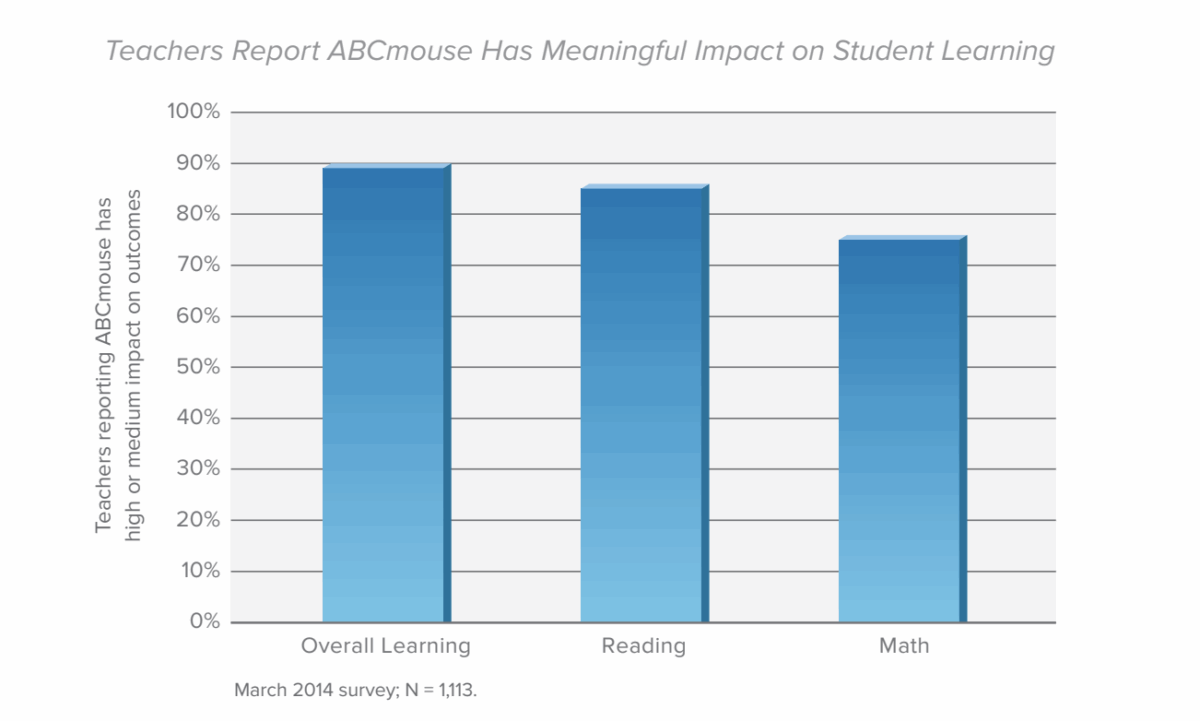
ABCmouse: Differentiation by Student Level
Each year, Laura finds that she has students who need a highly individualized approach to learning. One such student was a boy who had witnessed domestic violence and was placed in foster care. This student had an Individualized Education Plan (IEP) to help him learn while coping with attention deficit hyperactivity disorder (ADHD) and behavioral challenges. He was introduced to ABCmouse with the rest of the class:
“He loved it! I was able to get a good 30 minutes of attention from him, with him working, staying on task, and focusing. He knew that if he listened, learned, and behaved for at least the first 10–15 minutes of the whole group lesson, that he would be able to use ABCmouse. At the end of the year, he was near proficiency and missed the benchmark for reading by only one or two words. He could sound and blend, and he could count. He had his one-to-one correspondence.”
Another struggling student in Laura’s classroom benefited from a highly individualized curriculum using ABCmouse; it helped her learn to speak and read English, which was not her first language:
“When school first started, I had a student who had no reading skills whatsoever. When I finished testing at the end of the year, not only did she know all her letters in order and out of order, but she was reading 169 words per minute. In order for her to go to first grade, she had to read a minimum of 25 words per minute with fluency.”
Research Insights:
Research confirms the value of differentiating instruction, particularly for those children who are at the highest risk for educational failure.2 Current school realities challenge teachers to provide quality instruction for all learners: students with special needs, students learning English, and students who are gifted. Changing demographics, an emphasis on inclusion, a reduction in gifted and talented programs, and an effort to reduce the segregation of struggling learners has changed the role of teachers in meeting the diverse needs in their classrooms with their own lesson planning.3
In addition to using ABCmouse as a supplementary resource for children below grade level, Laura found it had a positive impact on advanced students, too. She describes how one gifted child was able to use ABCmouse for more challenging reading while remaining in the classroom with his same-aged peers:
He would say, “I’m gonna go to the challenging part.” He would like to go to the folk and fairy tale section because he could practice his reading. My kids, once they take of on it, they figure out how to change and adjust things. The website is so kid-friendly and so user-friendly that all of them (doesn’t matter if they’re high or low) can figure out how to change the settings to where they can actually challenge themselves. In this case, he was reading at a second-grade level, and in the middle of the year he figured out how to turn of the speaker and the highlighting because he wanted to try and read it by himself.”
Within her classroom, Laura successfully met the needs of her most at-risk students and her most advanced students with the same educational resource. “When they’re on the low end, I can assign lessons and activities that will help them; if I have a higher student who already knows sounds and letters, I can assign a completely different lesson for a challenge.”
ABCmouse: Differentiation by Instruction Mode
Laura often used ABCmouse learning activities to demonstrate a concept or skill to her students during whole-class instruction. Then, as they worked in centers, students had the opportunity to reinforce those skills individually or in small groups through more ABCmouse activities:
“I do my whole group lesson for about 15 to 20 minutes. After that are centers where I can teach in small groups. One of those centers is always ABCmouse for 15- to 18-minute rotations. So they have 18 minutes in the morning, 18 minutes at lunchtime, and 18 minutes in the afternoon. Mondays, Wednesdays, and Thursdays they have assigned, specific activities to complete. On Fridays, they complete one activity and then can explore.”
Research Insights:
Researchers highlight the need for teachers to vary the mode of instruction as part of a differentiated approach and support the use of technology in that effort.4 A meta-analysis of 122 studies on the use of technology in differentiating modes of instruction concluded that small group learning had more positive effects on achievement than individual learning; however, both types are necessary to meet the needs of all students.5
Laura found that the diverse activities in ABCmouse enable an engaging and interactive experience that can be delivered to her students in various groupings to teach key concepts. For example, she introduced the letter “A” with a music video on ABCmouse to the entire class:
“On ABCmouse, I would click on the letter ‘A,’ and then the visual learners have an example of the ‘A.’ And some kids like to dance, so I let them dance to the music. Some of them use the hand movement that we learned in class for the ‘A’ sound.”
After the whole-group instruction, students sat at the computers during center time and reinforced their understanding by completing ABCmouse games, puzzles, books, and art related to the letter “A” and the sounds that it stands for. And for any student that needed additional assistance, Laura assigned specific activities at the student’s appropriate level to be completed individually in class or at home.
ABCmouse Case Study Summary
Laura found effective new ways to differentiate instruction by incorporating high-quality education technology into the everyday routines of her classroom. Her inclusion of ABCmouse supplemented her curriculum with diverse activities, targeted the individual needs of each student, and facilitated different modes of teaching. By taking differentiated instruction to the next level, Laura helped her students make strong academic gains, and it has become a valued learning resource in her classroom ever since:
“I am a strong believer in ABCmouse and have continued to use this curriculum in my class for four years now, and it’s not going away! During my structured teaching time, I always implement ABCmouse into my whole-group and small group instruction, and even as a free choice center. This year, our school offcially became a Dual Language Magnet public school, and ABCmouse has again proven to benefit not only my native English speakers, but my English Language Learners alike.”
Notes:
1. Director of Research and Educational Partnerships, Age of Learning, Inc.; formerly Assistant Professor and Director of Early Childhood Education Master’s Program, Loyola Marymount University Halle, Hair, Wandner, McNamara, & Chien (2012)
2. Darling-Hammond, Wise, & Klein (1999) 3 Sapon-Shevin (2001)
3. Sapon-Shevin (2001)
4. Stanford, Crowe, & Flice (2010) 5 Lou, Abrami, & d’Apollonia (2001)
5. Lou, Abrami, & d’Apollonia (2001)
References:
Darling-Hammond, L., Wise, A., & Klein, S. (1999). A license to teach: Raising standards for teaching. San Francisco: Jossey-Bass.
Halle, T., Hair, E., Wandner, L., McNamara, M., & Chien, N. (2012). Predictors and outcomes of early versus later English language proficiency among English language learners. Early Childhood Research Quarterly, 27(1), 1-20.
Lou, Y, Abrami, P. C., & d’Apollonia, S. (2001). Small group and individual learning with technology: A meta-analysis. Review
of Educational Research, 71(3), 449-521.
Sapon-Shevin, M. (2001). Schools fit for all. Educational Leadership, 58(4), 34-39.
Stanford, P., Crowe, M. W., & Flice, H. (2010). Differentiating with technology. Teaching Exceptional Children Plus, 6(4),
2-9.
TM & © 2016 Age of Learning, Inc. All rights reserved. The names of other companies, products, and services are the property of their respective owners.

